
Gallon for Gallon, THIOGUARD ® TST provides more Bioavailable Alkalinity than any other treatment available, resulting in multiple benefits for your system, including:

■ Fewer Total Gallons Used
■ Control Odor
■ Control Corrosion
■ Improved Plant Performance
■ Reduced Nutrient Discharge
■ Reduced Biosolids
■ Reduced Costs
THE



OF TECHNICAL

SCHEDULE
ON-SITE
HEYWARD
407.628.1880 OR PREMIER MAGNESIA
MG-WATER.COM/THIOGUARD A DIVISION OF OWNED, MINED AND PRODUCED IN THE USA TOTAL SYSTEM TECHNOLOGY Comprehensive Treatment Application for Sanitary Sewers and Wastewater REDUCE ODOR. REDUCE BIOSOLIDS. REDUCE COSTS. LBS. ALKALINITY PER GALLON LBS ALKALINITY / GALLON Thioguard Lime Slurry Caustic Soda 14.00 9.50 5.00 .50 13.38 7.43 3.6 LBS. ALKALINITY PER GALLON
HARNESS
POWER
GRADE MAGNESIUM HYDROXIDE THIOGUARD ® TST FOR MORE INFORMATION OR TO
A CALL OR
VISIT, PLEASE CONTACT
AT
AT 813.928.2793
Editor’s Office and Advertiser Information: Florida Water Resources Journal 1402 Emerald Lakes Drive Clermont, FL 34711
Phone: 352-241-6006
Email: Editorial, editor@fwrj.com
Display and Classified Advertising, ads@fwrj.com
Business Office: 1402 Emerald Lakes Drive, Clermont, FL 34711 Web: http://www.fwrj.com
General Manager: Michael Delaney
Editor: Rick Harmon
Graphic Design Manager: Patrick Delaney
Mailing Coordinator: Buena Vista Publishing

Published by
BUENA VISTA PUBLISHING for Florida Water Resources Journal, Inc.
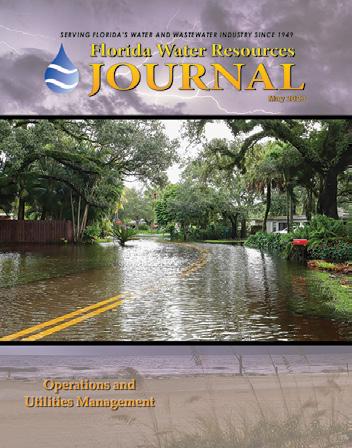
President: Richard Anderson (FSAWWA) Peace River/Manasota Regional Water Supply Authority
Vice President: Jamey Wallace (FWEA) Jacobs
Treasurer: Rim Bishop (FWPCOA) Seacoast Utility Authority
Secretary: Mish Clark Mish Agency
Moving?
The Post Office will not forward your magazine. Do not count on getting the Journal unless you notify us directly of address changes by the 15th of the month preceding the month of issue. Please do not telephone address changes. Email changes to changes@fwrj.com or mail to Florida Water Resources Journal, 1402 Emerald Lakes Drive, Clermont, FL 34711
Membership Questions
FSAWWA: Casey Cumiskey – 407-979-4806 or fsawwa.casey@gmail.com
FWEA: Karen Wallace, Executive Manager – 407-574-3318
FWPCOA: Darin Bishop – 561-840-0340
Training Questions
FSAWWA: Donna Metherall – 407-979-4805 or fsawwa.donna@gmail.com
FWPCOA: Shirley Reaves – 321-383-9690
For Other Information
DEP Operator Certification: Ron McCulley – 850-245-7500
FSAWWA: Peggy Guingona – 407-979-4820
Florida Water Resources Conference: 407-363-7751
FWPCOA Operators Helping Operators: John Lang – 772-559-0722, e-mail – oho@fwpcoa.org
FWEA: Karen Wallace, Executive Manager – 407-574-3318
Websites
Florida Water Resources Journal: www.fwrj.com
FWPCOA: www.fwpcoa.org
FSAWWA: www.fsawwa.org
FWEA: www.fwea.org and www.fweauc.org
Florida Water Resources Conference: www.fwrc.org
Throughout this issue trademark names are used. Rather than place a trademark symbol in every occurrence of a trademarked name, we state we are using the names only in an editorial fashion, and to the benefit of the trademark owner, with no intention of infringement of the trademark. None of the material in this publication necessarily reflects the opinions of the sponsoring organizations. All correspondence received is the property of the Florida Water Resources Journal and is subject to editing. Names are withheld in published letters only for extraordinary reasons. Authors agree to indemnify, defend and hold harmless the Florida Water Resources Journal Inc. (FWRJ), its officers, affiliates, directors, advisors, members, representatives, and agents from any and all losses, expenses, third-party claims, liability, damages and costs (including, but not limited to, attorneys’ fees) arising from authors’ infringement of any intellectual property, copyright or trademark, or other right of any person, as applicable under the laws of the State of Florida.
News and Features
Columns
20 C Factor—Patrick “Murf” Murphy
22 Test Yourself—Charles Lee Martin Jr.
28 Let’s Talk Safety: Hurricane Preparedness for Water and Wastewater Utilities
30 Reader Profile—John O’Brien
32 FWEA Focus—Sondra W. Lee
42 FWEA Chapter Corner: FWEA Southeast Chapter: 21st Annual Broward Water Matters Day—Isabel Botero
44 FSAWWA Speaking Out—Greg D. Taylor
Departments
54 Classifieds
58
Florida Water Resources Journal, USPS 069-770, ISSN 0896-1794, is published monthly by Florida Water Resources Journal, Inc., 1402 Emerald Lakes Drive, Clermont, FL 34711, on behalf of the Florida Water & Pollution Control Operator’s Association, Inc.; Florida Section, American Water Works Association; and the Florida Water Environment Association. Members of all three associations receive the publication as a service of their association; $6 of membership dues support the Journal. Subscriptions are otherwise available within the U.S. for $24 per year. Periodicals postage paid at Clermont, FL and additional offices. POSTMASTER: send address changes to Florida Water Resources Journal, 1402 Emerald Lakes Drive, Clermont, FL 34711
4 Florida Has Most Lead Pipes in U.S. 6 Construction Equipment Market Outlook: Challenges Persist, LongTerm Hope Remains High 22 Charlie Martin Jr. to Take Over Test Yourself Column 22 Donna Kaluzniak: Farewell and Thank You! 40 Operations Challenge: The World’s Most Exciting Operator Development Program—Cody Diehl 46 Horizontal Directional Drilling and High-Density Polyethylene Pipe: A Perfect Match—Lawrence Slavin 50 AMWA Announces 2023 Management Recognition Awards Honoring Water Utility Achievements and Individual Contributions 52 Southeast Florida Receives Record Rainfall Technical Articles 8 Bend, Don’t Break: Using Machine Learning to Predict Pipeline Failures at a Utility—Andrew Swirsky and Peter Kraft 24 Implementing People-Led Asset Management Using the ISO 55001 Framework—John Acton, Ken Gedman, and Melody Tungol Education and
14 Florida Water Resources Conference 27 CEU Challenge 34 FSAWWA Roy Likins Scholarship Fund 35 FSAWWA Fall Conference Call for Papers 36 FSAWWA Fall Conference Registration 37 FSAWWA Fall Conference Exhibitor Schedule and Sponsorship 38 FSAWWA Asian Pacific American Heritage Month 43 FWPCOA Training Calendar 49 FWPCOA Region IV Short School
Training
Display Advertiser
Index
record rain
information, go
Florida Water Resources Journal • May 2023 3 Volume 74 May 2023 Number 5
ON THE COVER: Fort Lauderdale and other southeast Florida cities experienced
and flooding in April. For more
to page 52. (photo: Google Images)
Florida Has Most Lead Pipes in U.S.
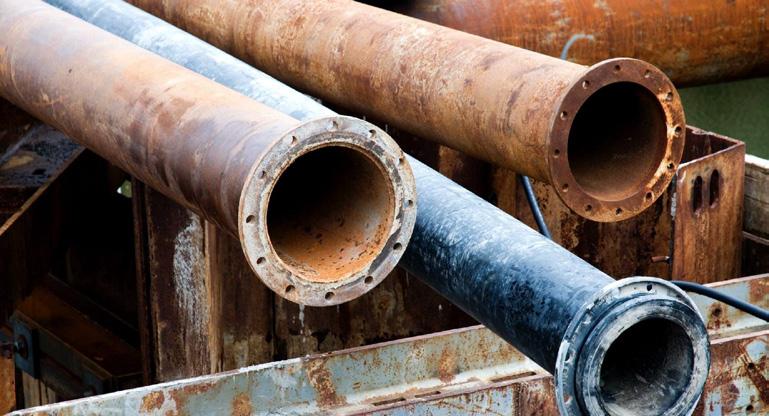
More than 9.2 million lead pipes carry water into homes across the United States, and Florida has nearly 1.16 million of them, according to a new survey from the U.S. Environmental Protection Agency (EPA). After the survey results were made public, the White House announced that it will provide $6.5 billion for drinking water infrastructure upgrades for all states across the U.S., including tribes and territories, in fiscal 2023. The funding is through the Drinking Water State Revolving Fund, which is part of the 2021 Bipartisan Infrastructure Law.
The survey will be used to earmark the funds to find and remove lead pipes in states
that need it the most. Previously, a state's share of lead pipe funds was based on its general infrastructure needs and didn't consider how many lead pipes the state had.
Florida will get $376,162,000 from EPA, with $254,788,000 of it to go toward lead pipe removal in 2023.
Lead Pipes: A Nationwide Issue
The lead water crisis in Flint, Mich., made lead in drinking water a national concern and demonstrated how old pipes can quickly become an urgent public health threat. Newark, N.J., saw prolonged lead water problems that
led to rapid replacement of thousands of lead pipes, as did Benton Harbor, Mich.
Lead can cause brain damage and EPA has said that low levels are detrimental to humans and no amount is safe for children. The Biden administration has set a goal to remove all of the country’s lead water pipes over the next decade.
This survey was the first time that EPA asked about lead pipes and it gave the best count yet of how many are underground. Florida in the lead was a surprise to many, as industrial states, like Ohio, Michigan, and Pennsylvania, are more typically associated with extensive lead pipe issues.
Illinois ranked second in the survey, with 1.04 million lead pipes, followed by Ohio, Pennsylvania, Texas, and New York.
Number of Lead Pipes in Florida Unexpected
After the survey was released, Erik Olson, with the Natural Resources Defense Council (NRDC), told the Associated Press that Florida's latest figure is “a big surprise." In 2021, the state had told his group it doesn't track lead service lines, so the NRDC estimated that about 200,000 lead service lines were in Florida at the time.
Olson said that the larger number of lead pipes in Florida is puzzling because they were most frequently installed across the U.S. in the decades before Florida's rapid population growth.
The EPA used the responses from water providers to determine the state estimates. The location of the lead pipes is still unknown and states like Florida have a lot of water lines that may be made of an unknown material.
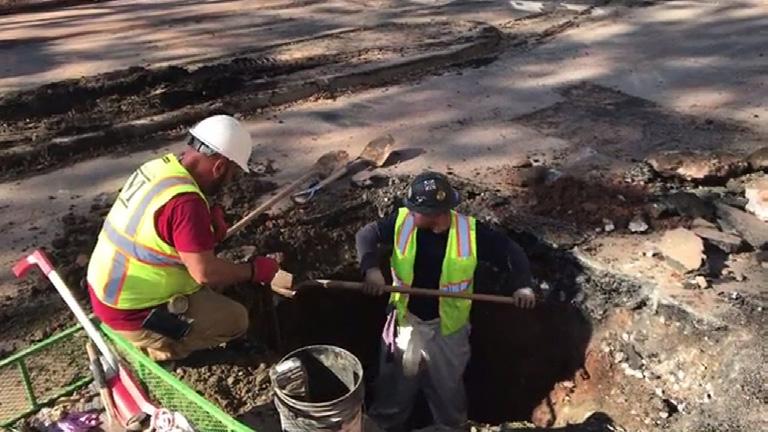
Some of the federal money will also go toward managing per- and polyfluoroalkyl substances (PFAS), as EPA has recently proposed drinking water limits on these "forever chemicals.” It will also fund the replacement of pipes past their useful lives, help systems purchase more reliable pumping equipment, and protect drinking water sources. S

4
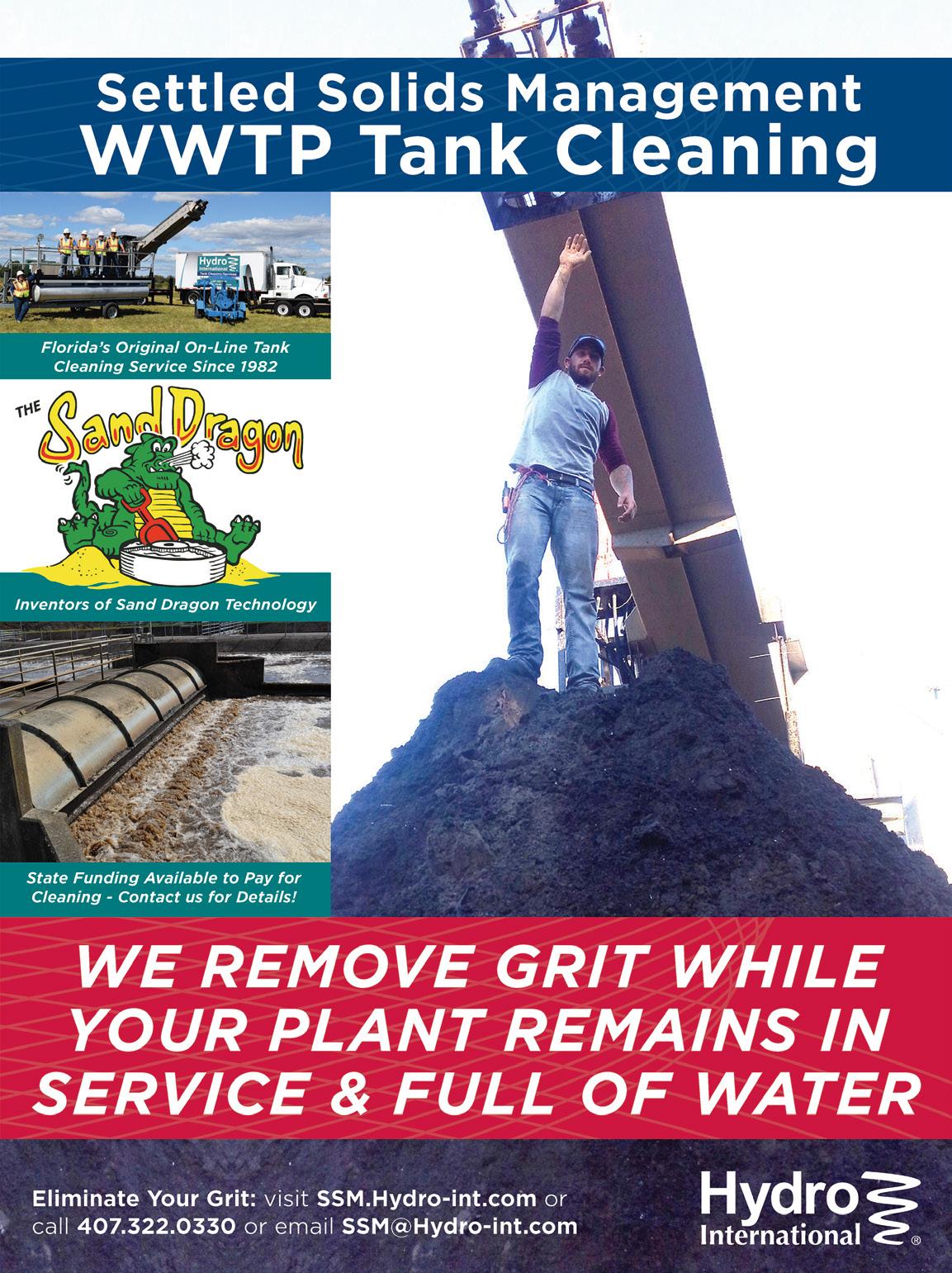
Construction Equipment Market Outlook: Challenges Persist, Long-Term Hope Remains High
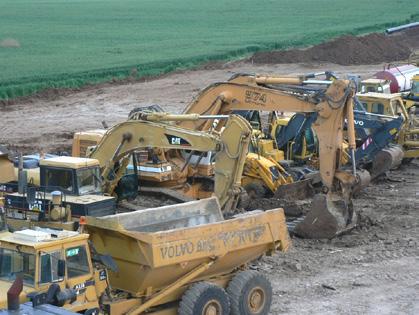
The equipment manufacturing industry is still recovering from the impacts of the COVID-19 pandemic nearly three years after its onset.
With that fact firmly in mind, the Association of Equipment Manufacturers (AEM) has surveyed its members regarding their thoughts on various economic trends and how they are affecting their efforts to do business, both within the United States and abroad.

In the latest survey, most respondents stated that they are still experiencing supply chain issues, with many saying that conditions continue to worsen.
“Nearly all respondents still face supply chain issues, with more than half experiencing continuously worsening conditions,” said Kip Eideberg, senior vice president for government and industry relations at AEM during its recently held quarterly webinar, Equipment Market Outlook. “The two driving factors that we hear about are supply chain disruptions and workforce shortages.”
The information obtained through AEM’s surveys is just some of what is detailed in its business intelligence dashboard and then later summarized in the webinars.
The ongoing challenges of loan availability, as well as energy and material costs, have plagued the construction industry, but hope is on the horizon for these issues, and the belief that these, and others, will eventually be resolved.
Driving Forces in the Industry
Some of the driving forces and key points from AEM’s first-quarter webinar in 2023 regarding what equipment manufacturers in the construction industry will be facing for the remainder of the year, according to presenter Danny Richards, lead economist for construction at Global Data, are as follows:
Global construction output growth slowed in 2022 and is to remain sluggish in 2023. Interest rates remain high and could rise further in the first half of this year before central banks bring this tightening cycle to an end, assuming that inflation starts to fall. Energy and construction material prices also remain high, although some have fallen from the peaks of the second quarter of last year.
Investment in infrastructure, as well as in energy and water utilities, will be driving forces for growth.
Investment in infrastructure will continue to be a driving force for growth, especially as the U.S. Investment Infrastructure and Jobs Act gathers momentum. Energy and water utilities will also provide a boost to overall construction activity, with renewable energy projects remaining a key investment focus.
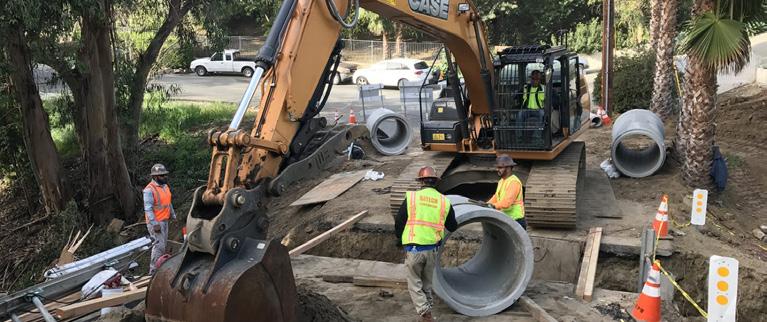
The industry is optimistic as it tracks $3.6 billion in projects across multiple sectors.
Despite a relatively weak short-term outlook for construction output, there is still a sizeable pipeline of opportunities on the horizon over the next several years.
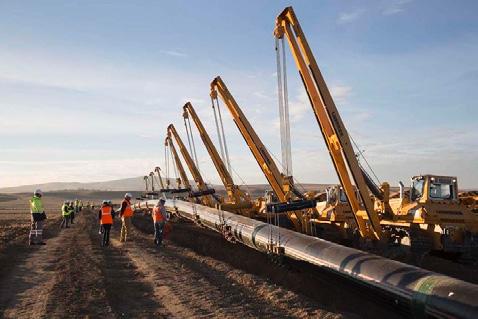
The decline in construction output is expected to slow in 2023.
The U.S. was one of the few markets to register positive growth in 2020 and 2021; however, driven largely by intense inflationary pressure and a slowing residential sector, output dropped sharply in 2022. Despite the deeper-than-expected decline in the residential market remaining a risk to overall growth, there has been an improvement in nonresidential sectors.
Hope for the Future
The data show that AEM construction equipment indexes are in line with average indexes. Despite supply chain and workforce retention issues, many equipment manufacturers are hopeful for eventual resolutions to these ongoing issues affecting the industry.
About the Association of Equipment Manufacturers
A North America-based international trade group, AEM represents off-road equipment manufacturers and suppliers, with more than 1,000 companies and 200 product lines in the agriculture- and construction-related industry sectors worldwide. The equipment manufacturing industry in the U.S. supports 2.8 million jobs and contributes roughly $288 billion to the economy every year. S
6 May 2023 • Florida Water Resources Journal
NOT YOUR
Raptor Septage Acceptance Plant
Removes debris and inorganic solids from municipal and industrial septage, FOG, and sludge. This heavy-duty machine incorporates the Raptor Fine Screen for screening, dewatering and compaction. Accessories include security access and automated accounting systems.


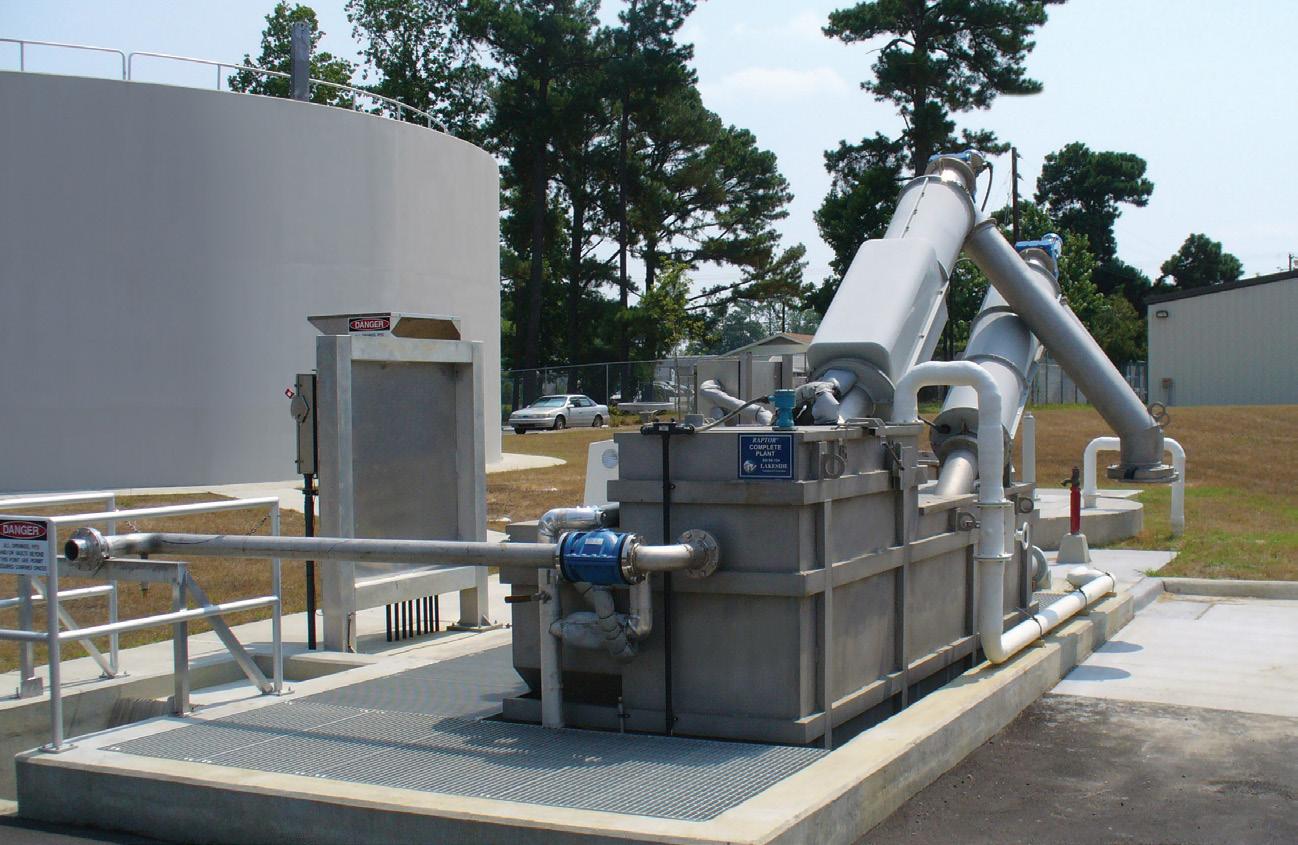
Raptor Septage Complete Plant
With the addition of aerated grit removal, the Septage Acceptance Plant is offered as the Raptor Septage Complete Plant.
Generate Revenue with Raptor ® Septage Acceptance Plants SIMPLE. EFFICIENT. INTELLIGENT.
ORDINARY
RECEIVING SYSTEM
Cleaner Water for a Brighter Future® REPRESENTED LOCALLY BY: Florida Panhandle Only T: 205.424.7570 www.eshelmancompany.com Grow your septage, FOG, and sludge receiving business with a Raptor Septage Acceptance or Complete Plant. All trademarks are owned by Lakeside Equipment Corporation. © 2023 Lakeside Equipment Corporation. Speak to one of our experts at 630.837.5640, email us at sales@lakeside-equipment.com, or visit www.lakeside-equipment.com for more product information. Trippensee Shaw, Inc. Eustis and Sebring, FL www.TrippenseeShaw.com T: 407.222.0575
Bend, Don’t Break: Using Machine Learning to Predict Pipeline Failures at a Utility

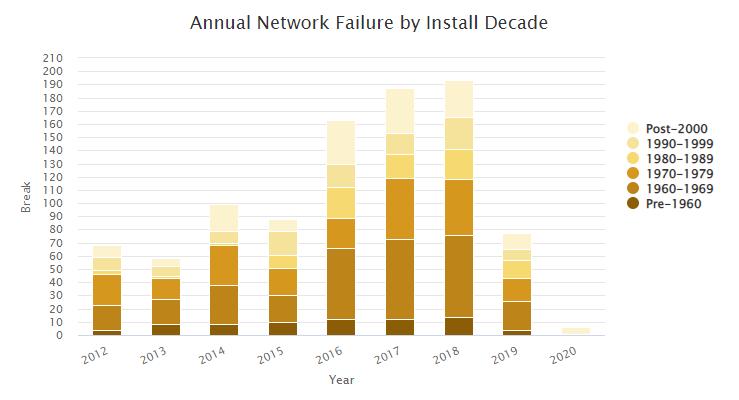

Andrew Swirsky and Peter Kraft
According to the American Water Works Association (AWWA) more than $1.7 trillion is needed to replace failing pipelines in the United States. As many utilities are working to maintain pace with expanding service areas, the existing pipelines can be neglected due to the priority of serving new customers. Thus, water utilities with limited funding and resources are struggling to be proactive about existing pipeline rehabilitation and replacements. This deferral of pipeline replacement is directly leading to the increasing frequency of main breaks and disrupted water services. This article addresses the following:
S An historical overview and the approaches taken for pipeline replacement strategies to date and how they compare.
S An overview of a new approach augmented by machine learning and the advantages it provides.
S A demonstration of example data sets to show
visualize and discuss approaches with different stakeholders.
Utility Approaches to Pipe Breaks
A study from Utah State University in 2018, “Water Main Break Rates in the U.S.A. and Canada: A Comprehensive Study,” captured the reality of main breaks. Figure 1, which is from the report, shows an increase (from 2012 to 2018) of pipe breaks based on pipeline material, with an overall increase of 27 percent.
When faced with this reality of increasing pipe breaks, with ever-competing objectives for budgets, how is a utility to respond? Traditionally, most utilities have focused on an age-based approach that prioritizes replacing older pipes. This approach is valid and well-backed by research showing that, all things being equal, older pipes are more likely to fail than newer pipes.
metallic materials, such as cast iron or steel, as the metallic-based pipelines are more prone to failure than nonmetallic-based materials, such as polyvinyl chloride (PVC). With all things being equal, this is also a valid approach and well-backed by research.
There is, however, a large overlap between the age- and material-based methods (Figures 2 and 3), as most metallic pipelines are simply just older and not used anymore for distribution networks. Thus, there are only minor differences between the two approaches. If a ranking methodology is utilized to prioritize pipeline replacement, then the overlap between the two factors are too similar to be of strategic difference.
To take a step beyond just these two factors, many utilities are turning to condition scoring and risk assessments based on a 1 to 5 scoring approach. While this can a useful tool to better understand a system, it only creates more complexity and a false confidence in the greater accuracy of pipeline replacement projects.
This issue is not just limited to the water sector, as documented by Louis Anthony (Tony) Cox, Jr. in his report, “What’s Wrong with Risk Matrices?” This study takes a cross-industry
8 May 2023 • Florida Water Resources Journal
FWRJ
Figure 1. Pipe break frequency (2012-2018).
Figure 2. Sample utility breaks by install decade.
Figure 3. Sample utility breaks by material.
Continued on page 10
Andrew Swirsky is the U.S.-Southeast manager for the decision intelligence solutions team at Xylem Inc. in Houston and Peter Kraft is the senior solution architect for Xylem Inc. in Denver.

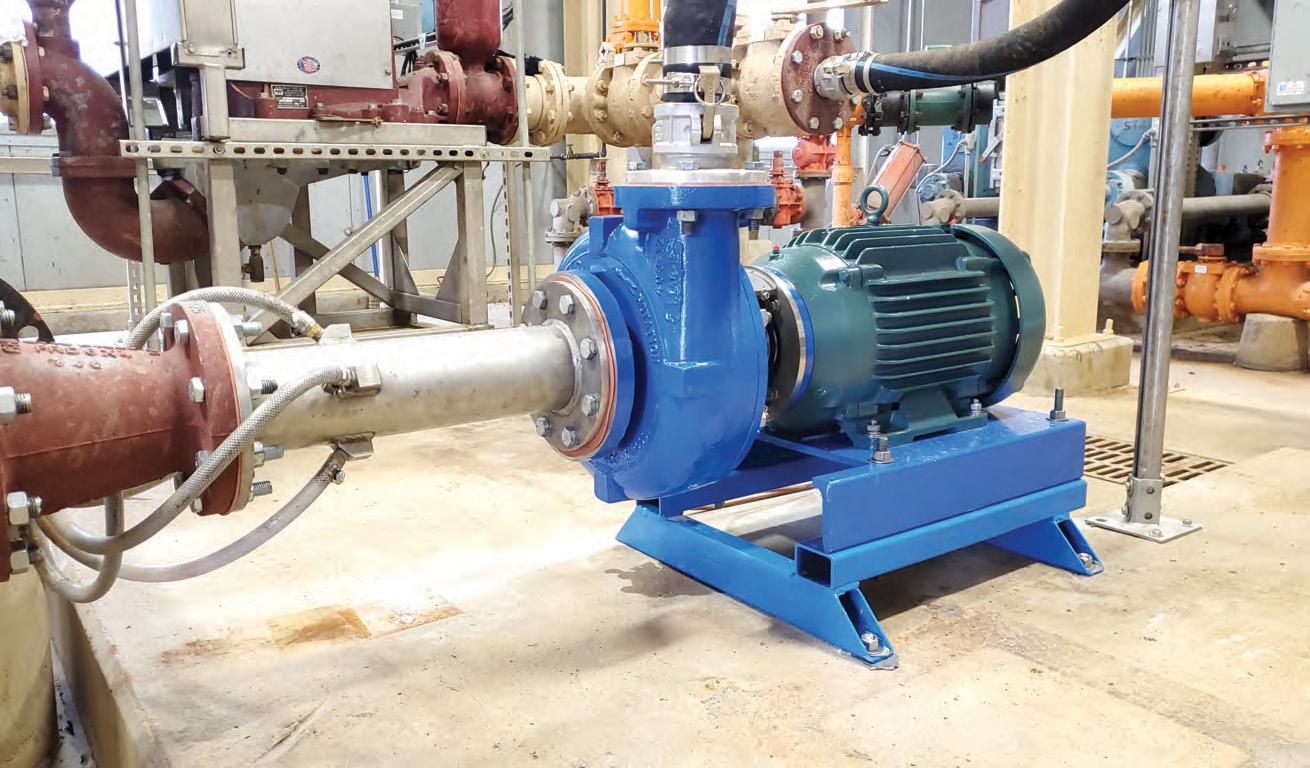


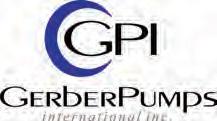
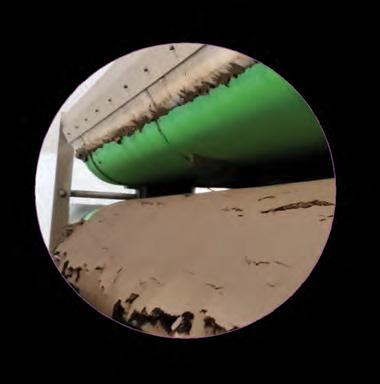
Florida Water Resources Journal • May 2023 9 The P6 Di erence Zero Pump Maintenance 10-Year Wear Warranty Reduce Polymer Increase Cake Solids Optimize System CONTACT: Stephen Gerber PHONE: 407 834 9104 EMAIL: sales@gerberpumps.com PATENTED www.p6polymix.com www.gerberpumps.com Want More from Your Belt Press? (Also Centri f uges and Screw Presses)
approach to risk matrices, their uses, and their results. The conclusion, however, is not reassuring for proponents of risk matrices:
“Risk matrices do not necessarily support good (e.g., better-than-random) risk management decisions and effective allocations of limited management attention and resources. Yet the use of risk matrices is too widespread (and convenient) to make cessation of use an attractive option.”
Additionally, when specifically applied to water distribution systems, the average risk weighting used in risk matrixes is heavily skewed toward middle-of-the-road scoring. This creates the typical results, as shown in Figure 4, where a utility has determined that only a small percentage of its system is high risk and the majority is low to medium risk.
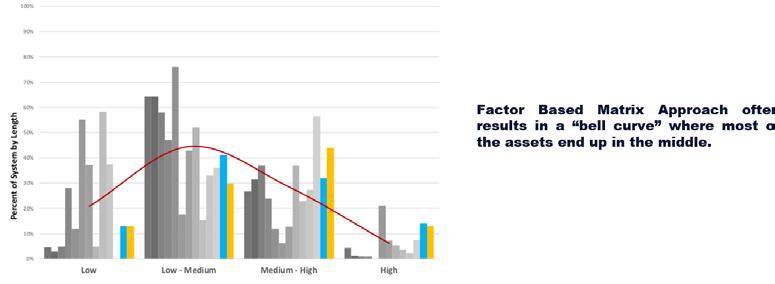
When a more-data-driven approach is utilized, the factor-based methods often end up looking like most of the pipe is low risk, with only
fractions spread throughout to high risk (Figure 5).
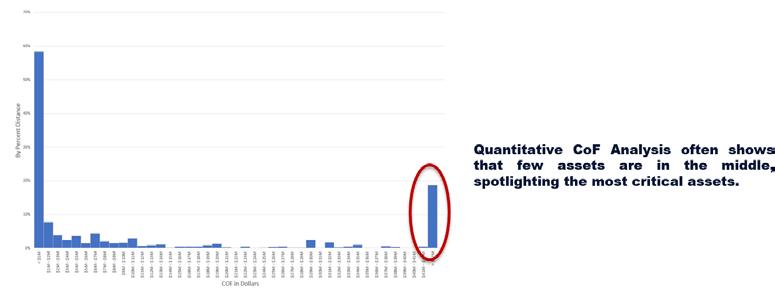
Utility Approaches to Pipeline Replacements
The current approaches to pipeline replacements are by no means flawed, but rather just limiting. They take historical breaks, and based on one or two factors, extrapolate them to the entire distribution system. While this is useful for capturing high-level budget needs and systemwide planning, it’s difficult to prioritize which pipes are the highest risk and at the front of the line for capital projects to be replaced. Even more significant is that replacing the highest-risk pipelines doesn’t always equate to reducing breaks. What is the true goal of the utility: to reduce overall risk or reduce breaks? If it’s to reduce risk, then more focus will be on fewer and larger pipelines and ones with a higher
consequence of failure (CofF). If it’s just to reduce breaks, then more focus will be on smaller lines with a lower CoF, but these can be more numerous.

Just because a pipe is old doesn’t mean it’s going to fail; it’s just that, over time, more and more of the neighboring pipes will fail. If a pipeline has remained in stable condition for 40 years, there’s little reason to think it will quickly fail; conversely, just because a pipe is new and made from PVC doesn’t mean it individually carries a lower-risk profile. It’s still subject to breaking from material failure and should not be automatically excluded from pipeline replacement projects without justification.
Each dollar that is able to be spent on pipelines must be strategically spent to lower the risk of breaks. Overall, the goals of pipeline management as a water sector are fairly straight forward: minimize cost and risk (Figure 6).
Today, utilities are becoming more datacentric in the way they drive operations and business decisions. With the collection of more data on pipeline breaks, soil conditions, external conditions, pressure waves, census data, work orders, traffic patterns, usage patterns, and daily hydraulics, many additional variables can be analyzed.
A Machine Learning Approach
Utilizing computing power and data models allows a utility to move past simple one- or twofactor statistical models. It’s very difficult, if not impossible, for engineering judgment and Excelbased spreadsheets to look at dozens of variables and ingest those into a multifaceted model. More specifically, many utilities are shifting toward a machine learning approach that moves past simple statistical models that compute a small range of variables, such as age and material.
Machine learning is a subset of artificial intelligence, with a focus on analyzing vast amounts of data with multiple variables to determine the strength of the relationships among the variables for specific outcomes. When applied to pipeline network modeling, machine learning provides the ability to process hundreds of thousands—if not millions—of calculations to best determine fit patterns and equations for inputs such as probability of failure (PoF) and likelihood of failure (LoF). Historically, this was prohibitive if done manually, and only slightly improved with the modern personal computer. Because the computer does this work on comprehensive data and is independent of all assumption, predictive power is generally very strong for these models.
An analogy for how machine learning works is similar to how children learn to ride a bike. Their teacher gives them an overall goal, such as “stay upright,” and lots of boundary guidance, such as “you can’t keep your feet on the ground, “use the
10 May 2023 • Florida Water Resources Journal
Figure 4. Factor-based matrix sample results.
Figure 5. Quantitate-based matrix sample results.
Continued from page 8
Figure 6. Risk - Return on Investment Optimization Framework
pedals to move forward,” and “use the handlebar to turn.” The teacher doesn’t give a long list of exactly how to mechanically ride a bike so that the first attempt is successful; instead, the child takes the initial goal and the boundary conditions to train on what works well (and what doesn’t) to stay upright. Then, after dozens of attempts, they finally get it!
While this is not a perfect analogy, machine learning models (Figure 7) for pipelines are similar in that they have a specific goal of “what pipe will break” to train the machine learning model. Pipeline prediction can use a variety of machine learning techniques, including Logistic Regression, Support Vectors, Classification Tree, Random Forest, Gradient Boosting, and XGBoost, as examples. The pros and cons of each type of machine learning model aren’t discussed here, but all of these approaches (and others) are utilized to determine that the appropriate data fit with the utility-specific conditions.

By utilizing new pipeline failure prediction methods, such as machine learning, utilities can leverage their existing data and cloud computing to better model pipeline failures (Figure 8). System-related data, such as pipeline material, diameter, length, hydraulic condition, previous failures, and installation year, comprise the first set of data; climate information, such as temperature, precipitation, and natural disasters, comprise the second set of data; environmental data, such as land use, soil type, soil corrosively, and traffic conditions, add in a third set of data; and engineered features, such as lagged failure history and buffer lagged failure history, can be brought in as the fourth set of data.
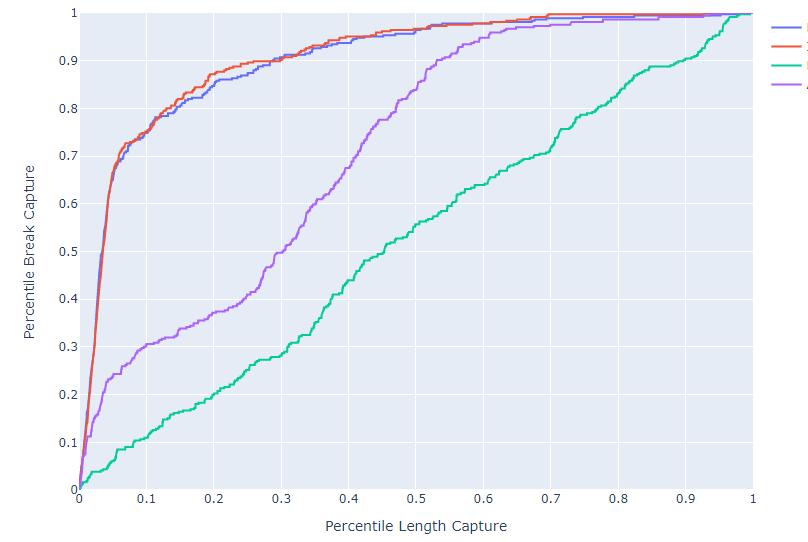

Additional data sources can be included as well; the only limit is the data quality and duration to be assessed.
The idea is to utilize all the types of available data and not make any assumptions going into the analysis. Each utility and each data set is unique, so there isn’t a one-size-fits-all approach. In fact, utilizing such an approach wouldn’t be useful to utilities with non-normal systems and failure data. The approach is to take all the inputs and data sources and utilize multiple models for analyzing the previous failure data. This typically includes up to 20 years total, with the first 17 years of data being used to develop and train the models. Then, by taking the last three years of failure data (often the data with the best health), a comparison is made of the various machine learning models to determine the best fit and select that one.
Figure 9 illustrates this approach and which model makes the most sense for the specific system.
This analysis is utilized to determine the classic PoF for each individual geographic information system (GIS) pipe segment. If desired,
Continued on page 12
Florida Water Resources Journal • May 2023 11
Figure 7. Machine learning models visualized.
Figure 8. Pipeline break machine learning data inputs.
Figure 9. Multiple model approach. The red and blue lines are machine learning algorithms, the green line is random, and the purple line is age-based.
it can be broken down into each pipeline joint (or stick), but this approach is often not costadvantageous for the distribution system. This approach removes human bias from the initial assessment to make the baseline determination. Then, armed with the PoF for the pipeline segments and the more-basic computing, it can be utilized to assign the CoF with an historically used field, such as cost of repair per pipeline length and diameter at the failure location. This can be incorporated alongside the hydraulic model with additional features, such as homes without water, critical facilities impacted, etc.
While the CoF doesn’t utilize machine learning in its approach, it often does take advantage of cloud computing to rapidly work through the entire system.
Combining the PoF and CoF results in what is known as the network risk driver (Figure 10). This is a simplified visual that reflects the results of the machine learning model as applied to the specific utility system. For example, in the figure the install year is the primarily contribution factor, followed by the hydraulics of the system (pressures and flows), then pipe length, proximity, material, and other measures. Of note is that, due to the inherent qualities of machine learning models, there is not a percentage weighting of importance for each category; this is merely a
visual representation of the contribution causes and the ranked importance of those data sources. When breaking down these results most water professionals would instinctively understand the install year; after all, on average, older pipes are more prone to failure than newer pipes. The hydraulics means that frequent or large pressure changes are the second most important criteria for failures; therefore, areas of town with high fulgurations or higher static pressures should be prioritized over those areas with very static and lower pressures. The pipe length is mostly just a result of the GIS conventions to document pipe data by segments instead of joints. So, the longer a pipe segment (not stick of pipe, just the GIS segment) the more likely it is to experience a failure.
This is one example of when engineering judgment and some common sense must be utilized to avoid overconfidence in the data, as pipeline breaks were mostly occurring near other historical breaks. Material is also a strong contributing factor, but far from the leading factor for this utility. The “other” category in Figure 10 contains all the other factors, such as soil type, census information, climate data, etc., which are minor drivers for the failures and a small part of the overall results.
Once results are obtained, the machine learning outputs can be utilized for practical uses. The first output is typically a table of pipelines
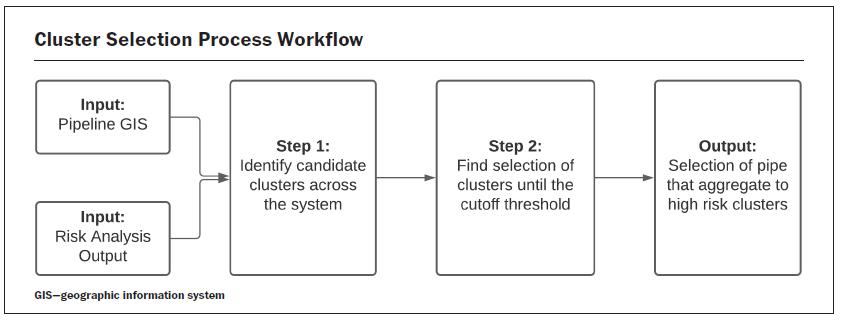
prone to failure, along with the confidence ranking, such as the top 1 or 2 percent of failures. This can be visualized via GIS and used to develop an inspection program or replacement program.

Most utilities have a capital improvement plan where they may have an expectation of replacing 1 percent of the pipeline network per year. Using the highest risk of failure and CoF pipelines they can now create better pipeline replacement programs; for example, 100 disconnected pipeline fragments, with an average length of 350 ft, may be up for repairs.
It would not be feasible to plan a capital replacement program solely from this analysis because it would result in a high number of excavations and disruptions, from road closures to service outages. In contrast, these pipelines can be grouped into 10 clusters that contain much of the same high-risk pipes, where each individual cluster contains between 0.8 and 1 mi of total pipe. The reduction in disparate assets represents a significant cost reduction if pipe replacements are planned to follow the cluster selection (Figure11).
Additionally, capital projects are typically time- and labor-intensive because they require service to be stopped, roads to be closed, and expensive excavation. If the riskiest pipes are scattered widely across a system, then the problems expound due to the additional time and costs of more projects, more contractors, and more mobilizations. Utilizing the cluster-based approach allows for the available budget to be datadriven by determining which areas to target. This also provides an alternative approach for utilities to request additional budgets to address the top 5 percent of riskiest pipelines in the system, rather than having a preset amount to spread across projects as they are able.
Conclusion
Utilities are using more data-driven approaches to drive pipeline replacement programs. While these give them better decisionmaking tools, they don’t replace well-run asset management programs and capital projects for replacements. Utilities should evaluate and strongly consider the use of machine learningbased pipeline risk tools to decide what to investigate, what to monitor, and what to fix.
References
• “Utah State in 2018 Water Main Break Rates in the U.S.A. and Canada: A Comprehensive Study” (Figure 11).
• “What’s Wrong With Risk Matrices?” Louis Anthony Cox Jr. Risk Analysis Vol. 28, 2008.
• “Using High-Risk Pipe Clusters to Guide Capital Project Planning.” March 2021 AWWA Journal. S
12 May 2023 • Florida Water Resources Journal
Figure 10. Machine learning outcome and pipeline risk drivers.
Continued from page 11
Figure 11. Clustering approach.
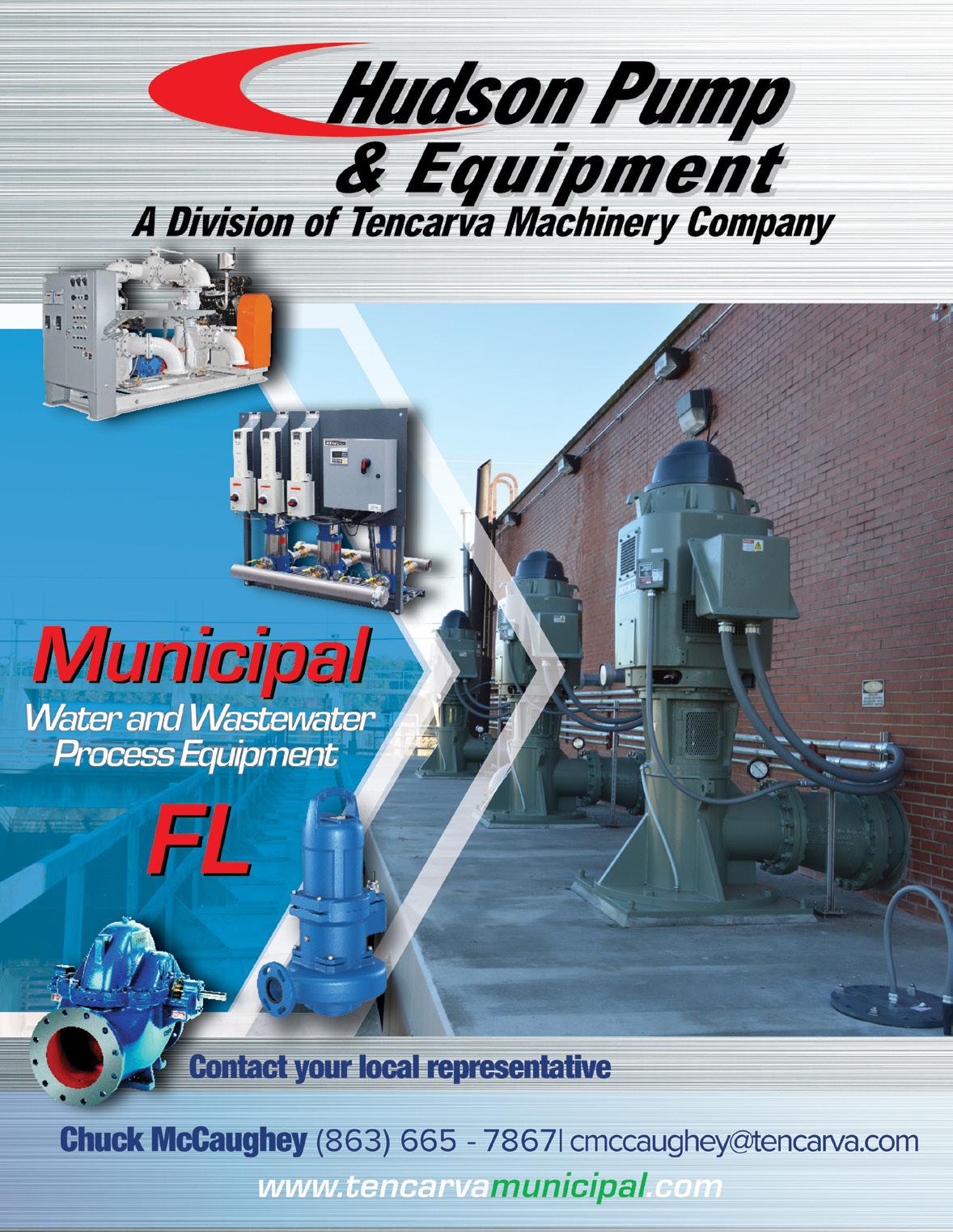
Florida Water Resources Journal • May 2023 13

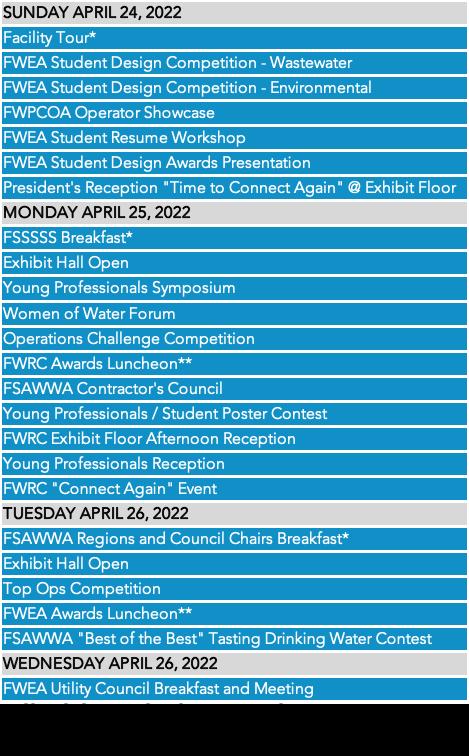

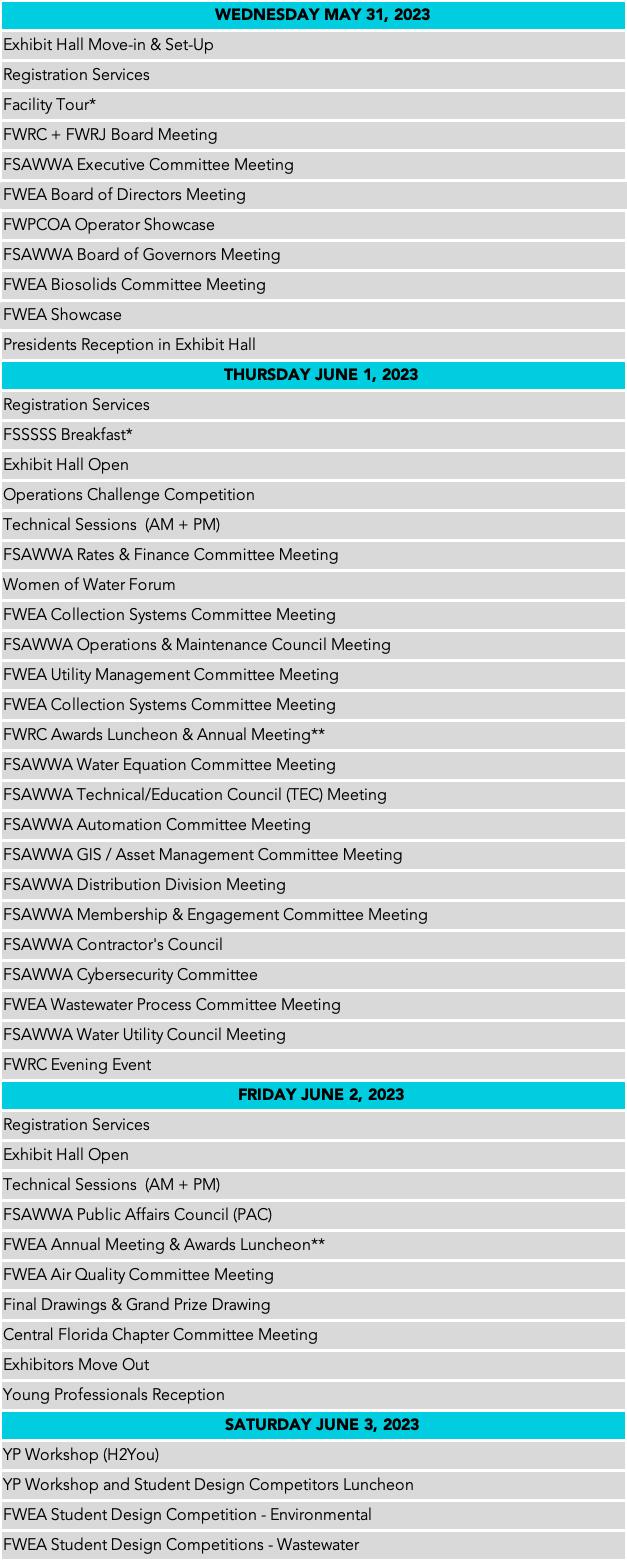
14 May 2023 • Florida Water Resources Journal May 31 - June 3, 2023 @ Gaylord Palms in Kissimmee, FL *Schedule is tentative, Subject to Change Looking for Technical Session schedule? Go to www.fwrc.org to see details today. Ready to build your own custom schedule? Download the app! App will be available Mid-May


Florida Water Resources Journal • May 2023 15
REGISTRATION
31 - June 3, 2023 @ Gaylord Palms in Kissimmee, FL 2 ADDITIONAL HOTELS NOW AVAILABLE Find links to book your hotel at www.fwrc.org Ticket Type Includes Exhibit Hall Includes Technical Sessions Includes FWRC &/or FWEA Lunch(s) Price (valid 5/1/23 - 6/3/23) Full Registration YES YES YES MEMBER: $500 NONMEMBER: $575 RETIRED: $100 SPOUSE: $100 Exhibit Hall Only YES NO NO $25 1-Day Registration (Thur OR Fri) YES YES Thursday: FWRC Friday: FWEA MEMBER: $325 NONMEMBER: $375 1-Day Contestant (Thur OR Fri) YES NO NO $145 1-Day Speaker (Thur OR Fri) YES YES NO $130 Booth Staff (4 free/booth) YES NO NO $10 Retired / Lifetime Member YES YES YES $100 Student Tickets YES NO NO FREE Register online today to avoid lines onsite
ATTENDEE
May
Attendee Checklist
Register for conference, avoid the onsite line


Complete online account profile & download app
Pay
Speaker Check List
Buy speaker attendee ticket
Complete online account profile & download app
Upload presentation
16 May 2023 • Florida Water Resources Journal
Mish Clark, Executive Director 267.884.6292 | mish@fwrc.org 240 Spruce Avenue, Merritt Island, FL 32953
Build custom schedule in app Invoices
Booth
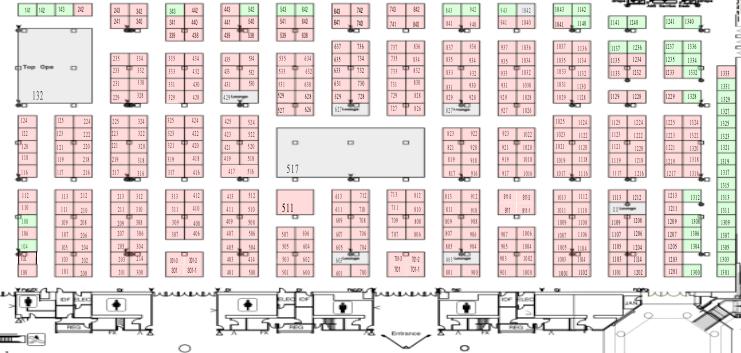
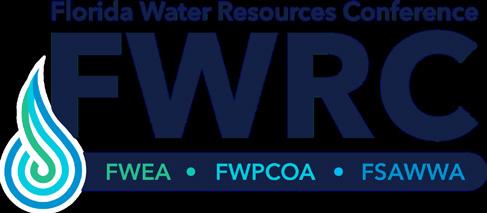
Florida Water Resources Journal • May 2023 17
reserved your 4 free Booth Staff Tickets?
Have you
Staff tickets are now $10 each. Go to www.fwrc.org to register today.
REGISTRATION
31 - June 3, 2023 @ Gaylord Palms in Kissimmee, FL
48 booths left. Book today!
EXHIBITOR
May
www.fwrc.org Only


18 May 2023 • Florida Water Resources Journal Check List Only 48 Booths left! Book today! Mish Clark, Executive Director 267.884.6292 | mish@fwrc.org 240 Spruce Avenue, Merritt Island, FL 32953 Complete Exhibitors Spec Packet for power, wifi, etc. Register Booth Staff (10 / booth). Cost is $10 per person, starting May 1st Pay Invoices Sign-up for Sponsorship before May 15, 2022 Plan to load in on Wednesday 5/31 9:00 AM - 4:00 PM.; If exhibiting with trailer or vehicles load in on Tuesday 5/30 from 12:00 PM - 5:00 PM Complete online account profile & download app Reserve Lead Gen on www.fwrc.org Reserve advertisement in program
Sponsorship Options still available...
Platinum Sponsor(s): $7,500 each
Staircase
Overall Meal Events
Silver Sponsor(s): $3,500 each
Network Lounge (1 still available)
Bronze Sponsor(s): $1,500 each
Tour bus
Water Station
Overall Scavenger Hunt
Supporting Sponsor(s): $1,000 each (19 still available)
Individual Technical Session(s): $750 each (22 still available)
Additional Sponsorship Benefits

All sponsorships include the following:
Sign Recognition in Central Area
Logo Inclusion on Conference Website

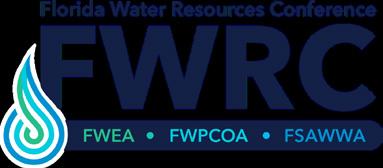
Printed Program Recognition
Sponsorship Checklist
Pay Invoices
Complete online account profile & download app
Reserve your complimentary attendee tickets
Florida Water Resources Journal • May 2023 19 Visit www.fwrc.org for details.
Title Sponsor
FWPCOA Spring State Short School
FWPCOA Spring State Short School
Patrick “Murf” Murphy President, FWPCOA
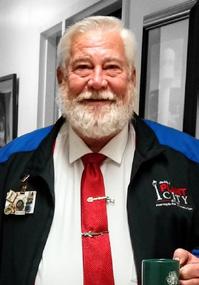
This article is going to be about the FWPCOA Spring State Short School, but since it’s May, there are a couple of reminders that I want to point out first.
May should be hurricane preparedness month; you should be ready year-round, so really pin down all the items that will make you as prepared as one can be.
The Florida Water Resources Conference (FWRC) starts on May 31 and runs until June 3; when you’re there, don’t fail to attend the FWPCOA Operator Showcase on Wednesday afternoon, which is the first day. We will have some great speakers and discussions about perfluorooctane sulfonic acid (PFOS),
New Personnel This Year
An amazingly strong number of students (361!) attended the Spring State Short School, held on March 13-17 at Indian River State College in Ft. Pierce. The new personnel at the college who assisted with coordination were so very nice, and I believe we will also have a very well-coordinated event in the fall. As president I tried to make it to every class on Monday, the first day, to thank all of the students and the voluntary instructors. I encouraged everyone to become more active in FWPCOA (if they aren’t already), get involved in the industry, and study during the week, especially if they were taking a test for voluntary licenses or certifications at the end of the school.
FSAWWA Top Ops Competition
I also asked everyone at the school to visit the arena area on Tuesday, where we had the Florida Section AWWA (FSAWWA) Top Ops competition set up to start a little before
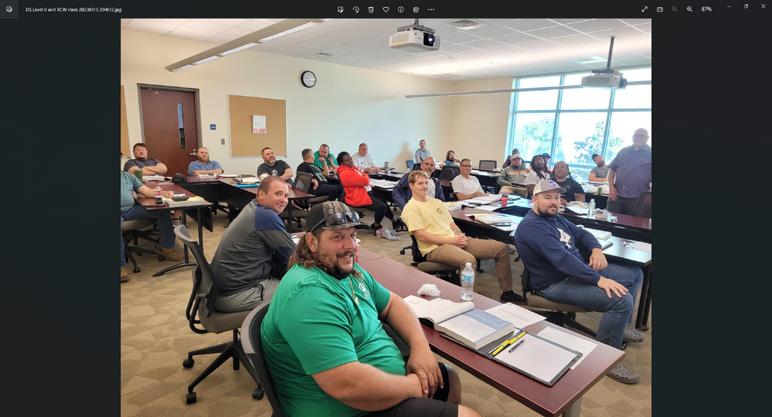

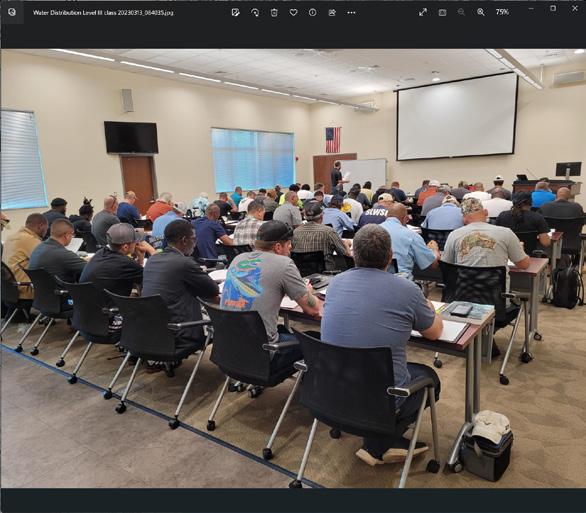
The competition was in a terrible dilemma due to the 2023 FWRC conference date change to later in the year. The competition, usually

held at FWRC, which is normally in the spring, would this year be only one week earlier from when the winning team would be going to the national competition at the 2023 AWWA Annual Conference at Exposition (ACE23) in Toronto. By FWPCOA providing a venue at the spring short school, it allowed for the winners to be able to make arrangements for the competition in Toronto. Almost the entire FWPCOA management class participated as an audience.
The teams from Pasco County and Bonita Springs fought hard for the first-place position. Congratulations to both teams as they did an amazing job at answering the “Jeopardy!”-style questions. Pasco County’s MonoRays (Karen Lewis, Vinny Domanico, and Kendra Phillips) pulled off the win, while Bonita Springs Utilities’ Testing the Waters (David Rodriguez, Michael “Brandon” Gentry, and Merritt Stewart) fought the good fight, especially since this was there first time in the competition.
Odyssey Manufacturing Co. and Hawkins Inc. sponsored the event and the Odyssey team came early to set up for the competition. Many
20
C FACTOR
Distribution system operator level III class.
Collection system operator voluntary license class.
Distribution system operator level II and reclaimed water operator class.
Management class attendees.
Supervisors and Administration Assistance
With all the voluntary licenses that FWPCOA offers, sometimes it gets a little confusing for a small portion of the students. As supervisors, when you are sending folks to the classes at the short school, please help the administrative assistants that might be setting up the enrollment by making sure that all the forms that the students will need are being provided up front. Just registering them for the class, and not providing the two-page documentation of experience and qualifications (and the supervisor’s verification sign-off), leaves the student standing by to fill out the form (and they still will need the supervisor’s signature, who probably isn’t at the school), creating a delay in their registration and certification.
The two-page voluntary certification application forms for wastewater collections (C, B, A), stormwater management (C, B, A), reclaimed water distribution (C, B, A), utility customer relations (III, II, I), and utilities maintenance (III, II) are all in the documents/ publications folder listed in the 2023 spring or fall short school packet.
You may not believe it, but usually one to two dozen students arrive and are uncertain about which class they should be attending. Sometimes this is a product of their employer wanting them to get a voluntary license in a different discipline, and not just being uncertain of the level they should be attempting. If there is any chance that someone might not grasp what they are supposed to be at the short school for, having the correct registration forms for the administrative assistant would help in their guidance. The FWPCOA training coordinator
should not have to look up dozens and dozens of students during the beginning day of the short school to tell them what class they should be in.
We will not mention the student who sits in the wrong class for three days, which is almost impossible now since the instructors have learned to ask questions each morning (and sometimes after lunch): Is your name on this roster? Did I not call your name? Didn’t you recognize that the PowerPoint and discussions were about a different discipline than what you do?
Don’t let your person be that person!
To All the Volunteer Instructors— Thank You!
Instructors and instructors-in-training, thank you so very much for all you do! Just saying that these volunteer instructors are going above and beyond is generally putting it mildly. Wednesday night at the school, Shirley Reaves and Jim Parrish stayed at the campus processing paperwork (after being there an hour before classes started at 8 a.m.), plugging away until after 9 p.m. Jeff Elder, I believe, had more than one after-classes cram session with
some students who needed additional help; most of the time it’s math, but he’s just a great source of information and whittles it down for the students.
I think everyone would be impressed to see the students that stay for an hour or two after most all of the classes have ended at 5 p.m. It’s not just a handful—these folks are there to learn and ready to invest their time with a live person. They’re hungry and ready to get fed!
Their books are dog-eared and bleeding with highlighting; these are generally the ones that will end up passing the test at the end of the week, unlike the ones who still have the cellophane wrapping on their manuals on their way home and were counting on learning through osmosis.
I know I’m not calling out all the instructors by name here; they all spend many hours on their training materials, just to come share their knowledge and help other folks succeed in our industry. Thank you one and all!

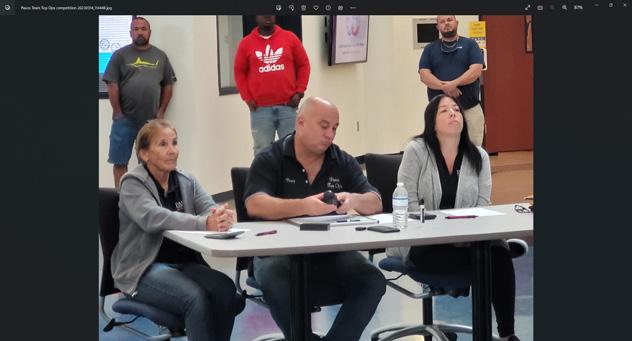
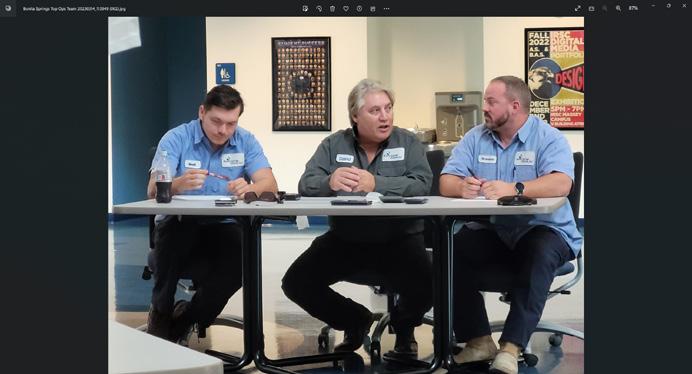

And yes, I did dress up like an old, fat leprechaun a day early on March 16, St. Paddy’s Day Eve, knowing that I needed to return home that Friday!
Let’s keep that water clean! S
Florida Water Resources Journal • May 2023 21
At the head table (center) for the Top Ops competition are (left to right) Pavol Plecenik and Nicole Thomas, and judges Mike Azzarella, Pat Allman, and Andrew Greenbaum.
The Testing the Waters team (left to right: Merritt Stewart, David Rodriguez, and Michael “Brandon” Gentry) represents Bonita Springs.
Karen, Vinny, and Kendra display the winning trophy and are now Toronto-bound!
Charlie Martin Jr. to Take Over Test Yourself Column
Charlie Lee Martin Jr., Ph.D., is the new writer for the FWRJ Test Yourself column.
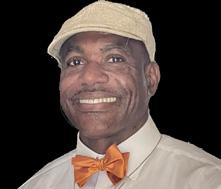
He is currently the city engineer for the City of Graceville. He is also the laboratory director of its National Environmental Laboratory Accreditation Program (NELAP)certified Drinking/Environmental Water Laboratory.
Martin currently holds both class A drinking water and wastewater operator licenses. He obtained his Ph.D. in civil engineering from the Florida Agricultural and Mechanical University (FAMU) via the FAMU/ Florida State University (FSU) College of Engineering in 2015, where he also teaches graduate environmental engineering courses.
We welcome him to the magazine!
Donna Kaluzniak: Farewell and Thank You!

We thank Donna Kaluzniak for her six years as writer for Test Yourself. She provided a valuable service to those in the water industry who wanted to further their education and careers.
Thank you, Donna—we wish you well in your future endeavors!
Test Yourself
What Do You Know About Lead and Copper Testing?
Charlie Lee Martin Jr., Ph.D.
1. Per the Inorganics Monitoring Rule, in 62550.513, Florida Administrative Code (F.A.C.), monitoring for lead is required at
a. the water treatment plant.
b. the water system’s first customer.
c. each well of the water system.
d. the point of entry.
2. Per 62-550.513, the maximum contaminant level (MCL) for lead is
a. 0.15 mg/l. b. 0.0015 mg/l.
c. 0.015 mg/l. d. 0.00015 mg/l.
3. Per the Lead and Copper Rule (LCR), Subpart I, Part 141, Title 40 Code of Federal Regulations (40 CFR, sections 141.80-.91) and section 62550.800, F.A.C., personnel are to collect
a. last-draw samples.
b. mid-draw samples.
c. within five minutes after opening the tap.
d. first-draw samples,
4. Per the LCR, samples sites are selected on
a. the geographic location within distribution systems.
b. the size of the building.
c. water usage of the customer.
d. buildings that may have an elevated risk of lead and copper contamination.
5. The action levels for the LCR based on the 90th percentile are
a. 0.015 mg/l and 1.3 mg/l (lead and copper).
b. 0.0015 mg/l and 10.3 mg/l (lead and copper).
c. 0.15 mg/l and 1.3 mg/l (lead and copper).
d. 0.00015 mg/l and 1.31 mg/l (lead and copper).
6. Per 40 CFR 141.90, all laboratory results of all lead and copper samples must be sent to the department within how many days following the end of the compliance period?
a. Five days b. 30 days
c. 10 days d. 60 days
7. Per the LCR, water samples are to be collected by the
a. water treatment plant operators.
b. water distribution operators.
c. laboratory technicians.
d. owners or occupants of multifamily residents, businesses, or houses selected for sampling.
8. Per the LCR, public water systems are required to notify each participant who collected water samples of their individual result within how many days?
a. 10 days b. Five days
c. 60 days d. 30 days
9. Per the LCR, the number of water samples that a public water system must collect to analyze for lead and copper during compliance is determined by
a. the size of the distribution system.
b. the size of the water treatment plant.
c. the amount of lead and copper pipe within the distribution system.
d. the size of the population and its required monitoring frequency.
10. According to the U.S. Environmental Protection Agency (EPA), exposure to lead via drinking water poses a health risk, especially to young children and pregnant women, in what way?
a. Damage to pancreas
b. Damage to brain, red blood cells, and kidneys
c. Damage to liver
d. Damage to intestines
Answers on page 58
References used for this quiz:
• EPA Lead and Copper Rule: A Quick Reference Guide
• Monitoring Lead and Copper in Florida Drinking Water, Florida Department of Environmental Protection
Send Us Your Questions
Readers are welcome to submit questions or exercises on water or wastewater treatment plant operations for publication in Test Yourself. Send your question (with the answer) or your exercise (with the solution) by email to: charmartin@msn.com
22 May 2023 • Florida Water Resources Journal
Retrofitting Lime Softening and Reducing Waste with Pellet Softening




esting Pilot T lableAvai

FWR Booth # RC 736
WATER TECHNOLOGIES

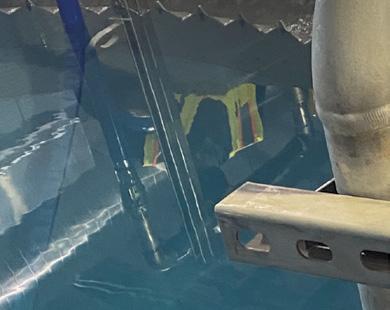



Veolia's ACTINA™ Pellet Softening technology is a compact, robust, and reliable softening system for the removal of calcium hardness, iron, and manganese. This system features no mechanical components inside of the reactor, making it easy and cost effective to operate.
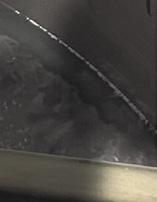
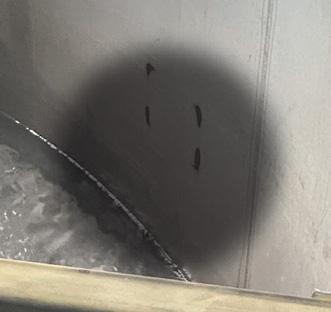
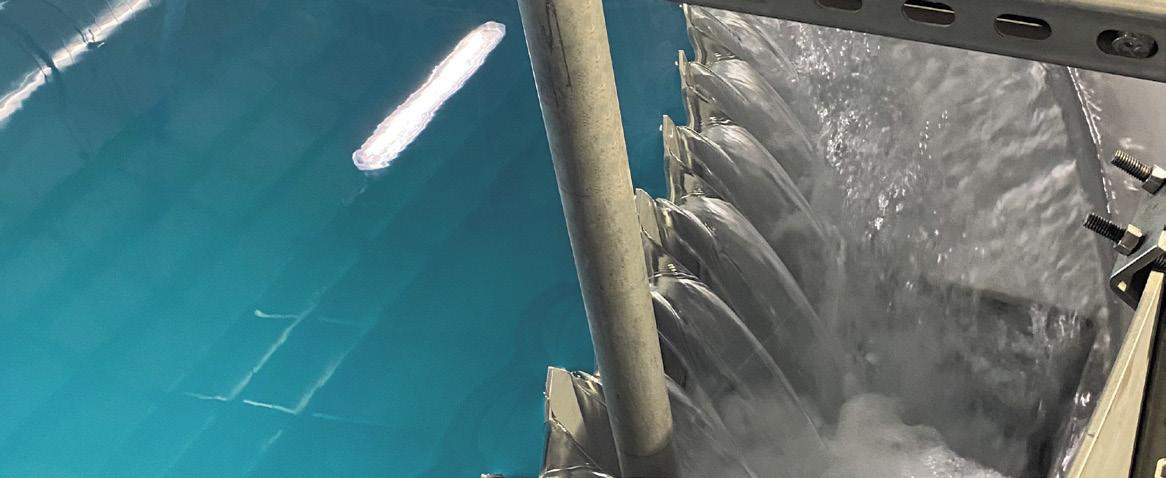
ACTINA™ Enhanced offers the addition of a coagulant/oxidant to maximize metals removal while also softening.








Saving energy, there is no additional waste or sludge thickening/ dewatering needed. Waste pellets can be repurposed or disposed of in multiple ways, leading to increased global ecological transformation.
Robert Bierhorst, Jr. Wesley Chapel, FL 813-929-4454


Wade Wood Tampa, FL 321-299-2395


Actina™ is exclusively represented in Florida by MTS Environmental. Visit us at mts-florida.com



usmunicipal@veolia.com www.veoliawatertech.com
Eric Peters P.E. Lakewood Ranch, FL 941-773-5051



Implementing People-Led Asset Management Using the ISO 55001 Framework
John Acton, Ken Gedman, and Melody Tungol
People-led asset management is at the heart of implementing the International Organization for Standardization (ISO) 55001 framework at Palm Beach County Water Utilities Department (PBCWUD). The organization became the first water and wastewater utility in North America to achieve ISO 55001 certification for its asset management system. While metrics, processes, and data are important aspects of the asset management system, the human (or people) factor exceeds them all: people perform the work and drive performance.
This article presents the experience and lessons learned from an organization that transformed its culture, ended communication silos, increased operational excellence through asset management (while energizing the human capital), focused on continuous improvement, and moved toward a performance-driven culture.
The Utility in a Nutshell
The PBCWUD is a county-owned utility, governed by the Palm Beach County Board of County Commissioners (BCC), which provides potable water, wastewater, and reclaimed water services to 600,000 residents and is the third-largest utility in the state of Florida. With a workforce of approximately 600, PBCWUD is an enterprise fund that is self-supporting through utility revenues and bound by capital bond covenants. The PBCWUD currently manages assets with a replacement cost of approximately $5 billion. Utility rates are established by the BCC, which also approves PBCWUD’s annual operating budget and five-year capital budget. An advisory board of utility stakeholders representing each commission district provides advice and feedback on issues that affect the organization.
The PBCWUD serves residents and businesses in unincorporated Palm Beach County, as well as the Village of Royal Palm Beach, City of Greenacres, and Town of Haverhill, and assumed responsibility for operating and maintaining the assets of, and providing water and wastewater service to,
the customers of the former Glades Utility Authority (GUA), which includes the cities of Belle Glade, Pahokee, and South Bay in western Palm Beach County. Through the establishment of interlocal agreements, PBCWUD additionally provides bulk supply services to the Village of Palm Springs, Town of Lake Clarke Shores, Seacoast Utilities, and the cities of Lake Worth, Boynton Beach, and Atlantis.
The organization is currently in transition from a sustainable utility to a “best–in–class” utility. Over the next five years, PBCWUD anticipates the loss of 20 percent of its current long-term staff, the implementation of $480 million in capital projects, and the maintenance of a safetyand team-oriented work environment. Other challenges that PBCWUD faces include aging infrastructure, population growth, and strict regulatory requirements for safety, water quality, and environmental sustainability.
ISO 55001: The Asset Management Journey
The PBCWUD recognized that, to become a best-in-class utility, the whole organization had to transform how it operates and manages risk. In 2016, senior leadership chose to implement an ISO 55001-compliant asset management system across the organization. The ISO 55001 is the global benchmark for utilities to effectively manage the balancing of costs, opportunities, and risks over the whole life cycle of an organization’s assets. This framework, coupled with using data to drive decision making, has benefitted the organization’s internal and external stakeholders.
This journey was undertaken by PBCWUD to assure regulators, customers, and other stakeholders that assets and services were efficiently managed to ensure an abundant supply of fresh, high-quality drinking water for the future and keep average household service fees low. It did not stop at complying with the standard, but also pushed toward achieving certification. Gaining ISO 55001 certification proved the utility’s commitment to best practices and
continuous improvement in its core business functions.
Lessons Learned and How Other Organizations Can Benefit From the Five-Year Journey Change Management and the Role of Leadership
The senior leadership at PBCWUD understood that, for the utility to move forward in adopting the ISO 55001 framework, changes had to be made, not only to the organization’s structure, but more so to its culture. A gap assessment was undertaken and it was clear that for the framework to be fully effective, the organization needed to own and fully embrace the whole approach to best-practice asset management.
Executive sponsors from senior leadership were identified to lead this change and plan out what needed to be done. Strong branding and a communications strategy were put in place to reach all stakeholders on what the utility was trying to accomplish. Some of the activities that were facilitated in the last four years include:
S Stakeholders’ communication planning and execution
S The development of marketing materials and collateral (ISO 55001 videos, posters, and quarterly articles in journals/ newsletters)
S The delivery of an ISO 55001 roadshow to promote the progress being made and gain the buy-in for the developing asset management system
S Monthly employee onboarding that included roles and responsibilities of newly appointed staff in terms of the developing asset management system
24 May 2023 • Florida Water Resources Journal
FWRJ
John Acton is the assistant department director and Melody Tungol is the technical compliance manager at Palm Beach County Water Utilities Department in West Palm Beach. Ken Gedman is the director of Stantec UK Business Consulting Practice in London.
S The recruitment of ISO core and champion members (defined later in the article) to act as change agents across the organization for the asset management system
Setting the Road Map for the Asset Management Improvement Program
Part of senior leadership’s role in steering and preparing the organization for the changes to be made was to develop an asset management improvement program. The utility understood that for this program to be successful the organization would need to:
S Recruit the necessary talent and provide the appropriate resources
S Get buy-in from the organization
S Look for subject matter experts
S Learn from other organizations
S Own the program by driving the change and implementing the plan from within
The asset management improvement program was broken down into actions and categorized into documentation, people, processes, systems, data, risk, and supply chains. Employees from across the utility (operations, maintenance, engineering, customer service, procurement, finance, information technology, environmental, health and safety, and human resources) were trained and developed their knowledge on a wide range of asset management topics. A framework was established that supported the definition of organizational arrangements, setting out roles and responsibilities across the 39 subject areas from the Institute of Asset Management (IAM), which is the international professional body for asset management professionals.
The implementation of the program covered a multihorizon approach and included revisions when necessary, as when COVID-19 affected the way the businesses functioned. It was important that every aspect of the program, from ensuring alignment of asset management objectives with the overall strategic objectives all the way to maintaining an approach of continuous improvement, was understood and the rationale behind it was clearly articulated
Putting the Team Together: A Balance of Insourcing and Outsourcing
In a business where outsourcing is the norm, PBCWUD has taken a different approach in the implementation of ISO
Period Covered
55001. With the executive sponsors and external resources in place, senior leadership recruited people internally to be part of the process. A core group of individuals, together with the executive sponsors and a consultant, started strategizing on how to best prepare the organization. The team recognized that changes, even for the improvement of the utility, are difficult and often met with hostility. People by nature do not like change.
The ISO core team members, taken from middle management and rank personnel, understood that to get buy-in from the organization they would have to show how everyone could benefit from asset management. It was equally important that the framework slowly permeate and support a positive organizational culture toward asset management. By influencing the culture, finding like-minded individuals, and using the ISO 55001 framework to drive improvement and mitigate risks, a new perspective had taken root in the utility.
Who Does Asset Management?
As stated previously, it’s the people in an organization who do asset management, and therefore, people, along with their knowledge, competence, motivation, and teamwork, have a huge influence on asset management outcomes.
Tools and technologies are important, but the engagement of the workforce, clarity of leadership, and collaboration among departments and functions are the real differentiators of a leading asset management organization (1)
People do Asset Management: Institute of Asset Management and the Big Picture
The definition of who does asset management summarizes the strategy used by PBCWUD to get people out of silos and parochial thinking. By incorporating asset management into the culture of the
2016
organization and treating culture and people as part of the organization’s valuable assets, these factors have led to the successful adoption of ISO 55001 and the asset management system over time.
Aside from the executive sponsors and ISO core team, a team of ISO “champions” was created. These are individuals that volunteered to promote the framework and provide feedback to senior leadership to ensure that new processes are captured, documented, and complied with. This also provides a forum where ideas for continuous improvement are discussed.
To be an ISO champion the individual has to have the following qualities:
S Believes in the organization’s mission and has a drive for asset management excellence
S Is a role model, enthusiastically modeling the right behaviors that become infectious to those around them
S Is a subject matter expert and a natural go-to person in the team
S Is credible, courageous, and curious to do better
The
Bottom Line:
Breakdown of Cost and Benefits
How Much Does it Cost?
For a five-year time frame, from a maturity score of 1.9 in 2016 to 3.2 in 2021, what PBCWUD has spent is shown in Figure 1.
Some of the activities related to implementing the ISO 55001 framework include:
S 44 presentations for the ISO 55001 campaign (internal and external)
S Six posters, three videos, nine journal articles, and other marketing collaterals
S 32 ISO-related workshops, 120 participants
Florida Water Resources Journal • May 2023 25
November
– October
Audit and Certification Cost (including mock audit) $100,000
S 55 artifacts Fees $274,000 Documented Labor Hours Spent (ISO 55001-related activities) 2,040 hours Average Labor Costs (per hour, including salaries and benefits) $76/hour Total Internal Labor Cost $155,040 Total Consultancy and Certification Cost $374,000 Total Cost $529,040
2021
Consultancy
Table 1. Palm Beach County Water Utilities Department Costs
Continued on page 26
Continued from page 25
S Four maturity assessments
S One performance dashboard portal
S 15 business process maps
S 22 sessions of employee onboarding
S 10 ISO executive sponsors
S Four ISO core team members
S 21 ISO champions
S 50 interviewees
S 120 interview sessions
S 549 employees reached
The table shows that the biggest onetime cost was for the certification process, which included a mock audit from the IAMcertified assessors. Consultancy fees from an outsourced provider included bimonthly catch-up calls with the ISO core team and scheduled visits to facilitate workshops, training, and maturity assessments. These activities cost approximately $54,800 per year.
Compared to other organizations that are currently implementing ISO 55001, the cost for PBCWUD was comparatively low, as most of the tasks, documentation, and inhouse facilitation were delivered by the ISO core team. By owning the important activities and tasks, the in-house team learned from the process and subject matter experts.
The team was agile and able to adjust accordingly to changes brought about by the pandemic that started in 2020.
The ISO core team was also responsible for developing key artifacts, such as the strategic asset management plan (SAMP); PBCWUD’s responsible, accountable, consult, inform (RACI) chart; critical business process maps; risk appetite statements; performance indicators; and metrics.
Benefits of the Asset Management Journey
By changing the culture, capturing information, using data to manage assets, and applying best practices in asset management, PBCWUD has benefitted in the following areas:
Taking Down the Silos: Improving the Communication Channel
Ultimately, the biggest benefit the utility gained from implementing ISO 55001 is strengthening communication among the different teams. This was reflected in a score of 4 in 7.4 clause, Communication(2); in 2016, the original score was 1.8. In the past, divisions worked in a vacuum, with no coordination of work or regard for the consequence of their actions, and costly mistakes that affected timelines, deliverables,
and stakeholder needs were prevalent. Implementing the asset management system has brought the organization together. When senior leadership helmed the organization’s RACI chart, this led to looking at the various areas in asset management and the role each one in the utility plays—from field personnel to the utility director.
A clear example of communication between senior leadership and the rest of the organization was the publication of the asset management policy. This document is reviewed on an annual basis (or when needed) and is shared with the whole organization. New employees are also made aware of this as part of their employee onboarding.
Knowledge Capture, Transfer, and Retention
To manage the risk brought by the aging workforce, lack of formal documentation, and low retention of talent in the water and wastewater industry, PBCWUD made it a priority to capture business-critical processes that cover capital improvement programs, regulations, health and safety processes, operations and maintenance work management processes, supply chains, and other areas.
Business process mapping sessions became the norm in the last five years. In these sessions, subject matter experts were interviewed by the ISO core team to cover end-to-end processes and identify all affected and involved stakeholders (internal and external). A diagram (with swim lanes) was developed to show the relationships and decision points for the process being captured. These documents are used in employee and contractor onboarding and are readily available on the organization’s SharePoint site. Key artifacts are updated and reviewed regularly by the ISO core team.
Data and Information in Driving Decisions and Managing Risks
Since PBCWUD uses a myriad of applications (computerized maintenance management system [CMMS] via Maximo, supervisory control and data acquisition [SCADA], ArcGIS, HachWIMs, LabWorks, etc.) to manage its business, it is data-rich. Senior leadership has recognized that, to make informed decisions, technicians and directors alike rely on the correct information at any given time. Key performance indicators (KPIs) are used to measure improvement, quality, efficiency, cost, and risks. Dashboards are used to track pipe breaks, aging work orders, backlogs, and other metrics.
Investing in People and Culture
The PBCWUD has recognized that the workforce should always be equipped with the necessary training, support, and resources as, noting again, its people who perform the work and drive performance. When empowered with the right tools, processes, and guidance from senior leadership, the people working for the organization can establish performance standards and thresholds, make decisions to reduce risks, identify opportunities in areas of weaknesses, use data to spot trends, monitor asset health, and realize that, as individuals, they have a significant impact on the achievement of the organization’s mission and drive further value to the business.
When people are identified as the greatest asset of the organization, the culture change is more successful. People respond positively to changes when they see consistent behaviors (especially from leadership), continuous communications, and reinforcement.
Continuing the Asset Management Journey: Beyond Certification
For PBCWUD the journey does not end with certification. The assessment from the audit became the new baseline for the other improvements the organization is planning for the next 25 years, as the utility goes into the master planning phase. This provides the plan-do-check-act cycle of continuous improvement, which is a four-stage problemsolving model that enables organizations to continually improve processes, products, or services.
The utility is looking at leveraging the power of data to move from a daily maintenance type of culture, by gaining control of work and setting standards, to a performance type of culture where engineered reliability, organization excellence, and proactive maintenance are the norm.
The PBCWUD also has joined the United States chapter of IAM and is currently spearheading the South Florida Chapter and plans on helping and learning from other organizations on their asset management journey.
References
(1) An Anatomy of Asset Management. Institute of Asset Management, Chapter 5, page 31.
(2) ISO 55001:2014. Clause 7 Support, Clause 7.4, Communications. S
26 May 2023 • Florida Water Resources Journal
Operators: Take the CEU Challenge!
Members of the Florida Water and Pollution Control Operators Association (FWPCOA) may earn continuing education units through the CEU Challenge! Answer the questions published on this page, based on the technical articles in this month’s issue. Circle the letter of each correct answer. There is only one correct answer to each question! Answer 80 percent of the questions on any article correctly to earn 0.1 CEU for your license. Retests are available.
This month’s editorial theme is Operations and Utilities Management . Look above the set of questions to see if it is for water operators (DW), distribution system operators (DS), or wastewater operators (WW). Mail the completed page (or a photocopy) to: Florida Environmental Professionals Training, P.O. Box 33119, Palm Beach Gardens, Fla. 33420-3119. Enclose $15 for each set of questions you choose to answer (make checks payable to FWPCOA). You MUST be an FWPCOA member before you can submit your answers!
Bend Don’t Break: Using Machine Learning to Predict Pipeline Failures at a Utility
Andrew Swirsky and Peter Kraft (Article 1: CEU = 0.1 DS/DW02015419)
1. The 2018 Utah State study revealed that, from 2012 to 2018, the break rate for steel pipe
a. remained unchanged.
b. increased.
c. decreased.
d. declined to less than that of ductile iron pipe.
2.. Machine learning is a subset of ___________ with a focus on analyzing vast amounts of data with multiple variables.
a. artificial intelligence
b. integrated technology
c. geographic information systems
d. asset management
3. The ____________ is derived by combining the probability of failure (PoF) and consequence of failure (CoF).
a. Hydraulic Sensitivity Factor
b. Spontaneous Fracture Quotient
c. Network Risk Driver
d. Damage Probability Index
4. For the specific utility evaluated in this article, which of the following is the second greatest contributor to failure risk and consequence?
a. System hydraulics
b. Installation date
c. Pipe length
d. Pipe diameter
Article 1
If paying by credit card, fax to (561) 625-4858
providing the following information:
5. As applied to water lines, a problem with utilizing risk matrices to determine replacement priority is that they
a. are too complex.
b. tend to disregard certain highly relevant factors.
c. are too heavily skewed toward middle-of-the-road scoring.
d. inevitably lead to premature pipeline replacement.
Florida Water Resources Journal • May 2023 27
NAME (please print)
SUBSCRIBER
LICENSE NUMBER for Which CEUs Should Be Awarded
(Credit Card Number) (Expiration Date) EARN CEUS BY ANSWERING QUESTIONS FROM PREVIOUS JOURNAL ISSUES! Contact FWPCOA at membership@fwpcoa.org or at 561-840-0340. Articles from past issues can be viewed on the Journal website, www.fwrj.com.
Hurricane Preparedness for Water and Wastewater Utilities
Katrina, Ike, Rita, Ivan, Sandy, Irma, Ian, and Nicole. All of these are names of devastating weather events that have wreaked havoc on the eastern and southern parts of the United States, as well as island states and coastal nations, since the beginning of the 21st century. A hurricane’s destruction doesn’t spare water and wastewater utilities, and the loss of potable water further exacerbates response and recovery efforts.
Drinking water and wastewater utilities need to take precautions in advance of the arrival of a hurricane. Public suppliers in the possible path of a storm should prepare for high winds, storm surge, torrential rain, flooding, and extended power outages.
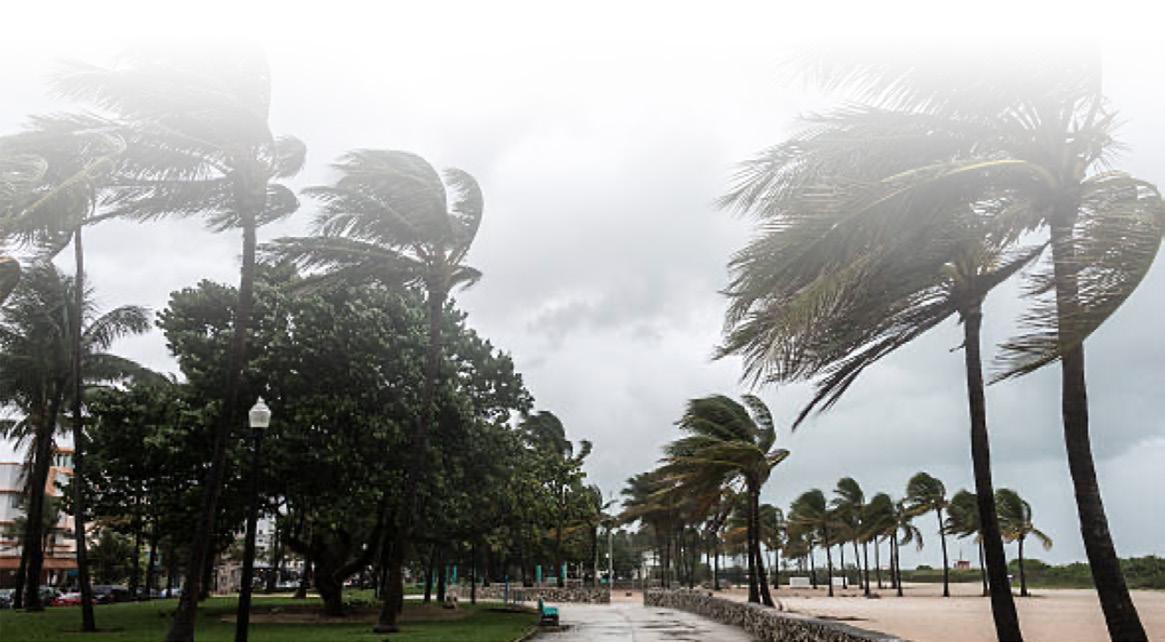
Common storm impacts on utilities include:
S Loss of water pressure or sewage spills from pipe breaks caused by uprooted trees, washouts, and other events.
S Loss of power from downed power lines.
S Combined sewer overflows from flooded storm drains.
S Flooded facilities, particularly those near rivers and coasts.
S Impeded roadways from debris, floods, and fallen trees, preventing travel to facilities or access to broken mains.
S Loss of water quality testing capability because of damage to facilities or restricted travel.
S Staffing shortages while personnel deal with their own families and homes during a storm event or are unable to get to work because of impassable roads or weather conditions.
Advance Preparation
To help utilities provide continuity of service to their customers before, during, and after the storm, the following actions are recommended:
S Weather monitoring. The National Oceanic and Atmospheric Administration (NOAA) provides daily weather forecasts and severe storm warnings through the National Hurricane Center, National Weather Service, and other agencies.
S Vulnerability assessment. Know what the utility’s critical assets are and what components are most likely to fail in the event of a catastrophic weather event. A thorough vulnerability assessment can identify what needs fortification, as well as access and escape routes.
S Agency coordination. Plug into the Water/ Wastewater Agency Response Network (WARN), coordinated through the U.S. Environmental Protection Agency (EPA), prior to an event so you know who to call for help with equipment, manpower, and other assistance when disaster strikes.
S Emergency response plans. Review, update, and practice emergency response plans before disaster strikes. Make sure
28 May 2023 • Florida Water Resources Journal
LET’S TALK SAFETY
This column addresses safety issues of interest to water and wastewater personnel, and will appear monthly in the magazine. The Journal is also interested in receiving any articles on the subject of safety that it can share with readers in the “Spotlight on Safety” column.
Let’s Talk Safety is available from AWWA; visit www.awwa.org or call 800.926.7337. Get 40 percent off the list price or 10 percent off the member price by using promo code SAFETY20. The code is good for the Let’s Talk Safety book, dual disc set, and book + CD set.
that everyone knows the drills, update emergency contact numbers as necessary, and coordinate with key response partners.
S Establish service priorities. Identify priority water customers, such as hospitals, record their contact information and location, and make a plan to restore services to those facilities first.
S Emergency water supply. Establish a plan to provide potable water, which could include bulk water hauling, temporary bypass lines, mobile treatment units, and interconnections with other water supply agencies.

S Emergency operations/incident command centers. Work with other local utilities and agencies to establish and understand how a community emergency operations center will be activated, who will be in charge, and what the utility’s role is.
S Public notification. Create public outreach materials to provide your customers in advance with information they need during a hurricane, and develop a plan to inform the public during and after an event about water advisories, such as boil water notices, and service disruptions.
When Landfall Looms
Readiness for an event means that the utility is poised for action when the hurricane is near and predicted to make landfall. Actions to take include:
S Facility readiness. Secure equipment, clear storm drains, pile sandbags to protect facilities in flood-prone areas. Protect exposed pipes and pumps.
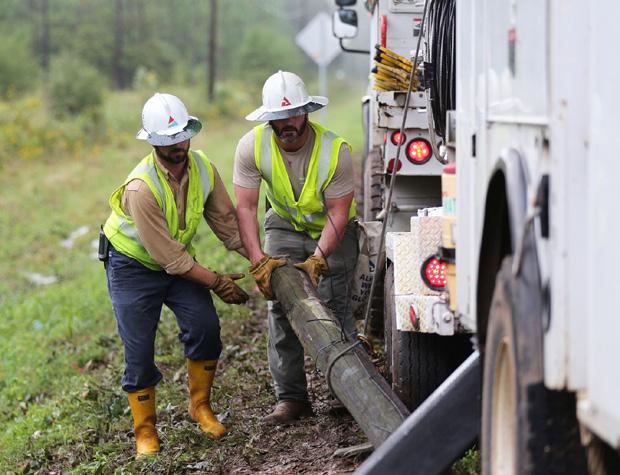
S Backup power. Fill fuel tanks for generators. Exercise each generator to be sure it’s running properly and power transfer is reliable. Assume a lengthy power outage. Estimate the time that you will be able to meet demand with the backup power,
fuel, and water storage you have on hand. Identify several possible locations where fuel can be procured in case your primary supplier becomes unable to deliver.
S Water readiness. Fill finished storage tanks to full capacity to help you meet demand during a power outage and to help anchor your tanks during high winds and inundation. Wastewater facilities should empty holding tanks, ponds, and lagoons to prepare for an increased flow.
S Water storage and water sources. Identify sources that may become inundated. Prepare to remove sources from service that may be susceptible to damage from inundation or intrusion by flood-borne pathogens or salt water.
S Chemical storage. Check tanks to be sure you have enough essential chemicals (e.g., disinfectant) to get you through the storm. Check tank anchoring to be sure they are protected from wind damage and buoyancy forces (floating or overturning) should they become inundated.
S Vehicle readiness. Fill vehicle gasoline tanks, pack with equipment and gear, and park vehicles on higher ground or send them home with on-call staff. Fill spare fuel tanks to full capacity. Provide essential equipment for each vehicle, including radios, instruments, tools, safety equipment, lights, ropes, first-aid kits, etc.
S Personnel readiness. Identify essential staff to shut down and start up the system and outfit them with proper equipment, gear, vehicles (or establish alternative transportation plans), and communication systems—note that radios may work better than cellphones. Review evacuation and escape routes and procedures, as well as emergency shelter plans. Identify staging areas for mutual-aid crews if necessary, including facilities to house the crews.
emergency operations center.
S Continuity of operations. Contact all essential employees to place them on alert. Make sure that sufficient staff will be on duty throughout the expected storm duration. Provide enough food and clean water for staff working extended shifts. Have them bring extra dry clothes, and consider providing sleeping arrangements so that extended-duty staff members do not become overly tired.
S Emergency communications. Check your emergency communications equipment to be sure it’s in good working order. Charge all batteries, or replace with fresh ones. Distribute communication equipment to appropriate staff.
S Public communications. Be prepared to provide public information as needed. Check contact information with local radio and television stations, and use social media, if possible. If you do not have storage and/or dedicated backup power sufficient for three days, consider preparing water conservation advisory notices that can be issued.
Additional Resources
For more information go to:
• NOAA StormReady website at www.nws. noaa.gov/stormready
• EPA websites on emergency response and preparedness at www2.epa.gov/ waterutilityresponse
• Incident checklist for hurricanes at www.water.epa.gov/infrastructure/ watersecurity/emerplan/upload/ epa817f15006.pdf
• Florida’s Water Tracker at www. flwatertracker.com
• FLAWARN at www.flawarn.org
Florida Water Resources Journal • May 2023 29
S
Seacoast Utility Authority, Palm Beach Gardens
Palm Beach State College, Lake Worth
Work title and years of service.
At Seacoast Utility Authority I’ve been a class A wastewater operator for two years. At Palm Beach State College (PBSC) I’ve been an adjunct water/wastewater instructor for six years.
What does your job entail?
the PGA Wastewater Treatment Plant, which includes operation of a 100 percent reclamation facility for irrigation-quality water with advanced
waste treatments. We also conduct biosolids handling, resulting in a product that becomes agriculture fertilizer.
I prepare reports, conduct meetings, and provide training and plant tours. As needed, I assist with mechanical and electrical repairs.
What education and training have you had?
I completed the PBSC level C residence courses for my class A and B level licenses. I took several correspondence courses at California State University at Sacramento and am certified by the National Environmental Laboratories Accreditation Conference (NELAC) for the analyses that we conduct. I also went to college for two years to studying literature.
What do you like best about your job?
I really like what we do at the water and wastewater treatment plants to protect the environment. It’s very rewarding knowing that we’re providing customers with their most valuable resource and protecting the health and well-being of those we serve.




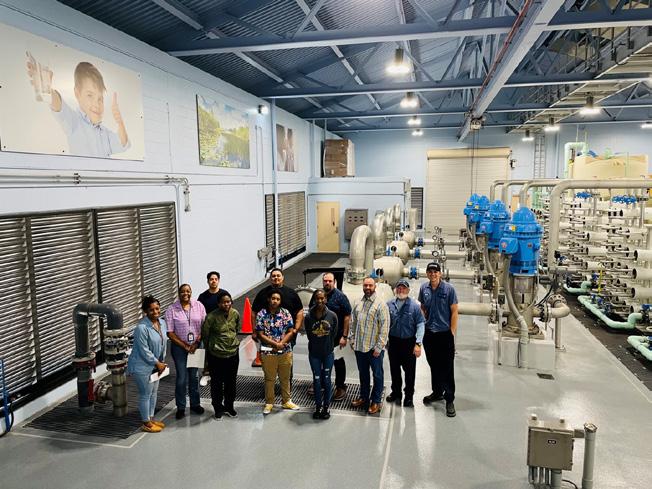
What professional organizations do you belong to?
I belong to FWPCOA, FWEA, FSAWWA,
the Water Environment Federation (WEF) and American Water Works Association (AWWA).
How have these organizations helped your career?
The high-quality people involved in FWPCOA, FSAWWA, and FWEA have helped me learn what our industry has available in research, education, and application for all aspects related to water quality and production to equip myself and my colleagues to do the jobs we’re entrusted with.
What do you like best about the industry?
Currently, I like all of the innovation and development of how we treat water and waste to become more sustainable. I welcome the opportunities that present themselves for us to reuse water and other resources.
What do you do when you’re not working?

When I’m not working at the treatment plants I’m teaching water and wastewater treatment. After that, I love to spend time with my family in south Florida and travel around the United States and the West Indies. Fishing is my favorite hobby. S
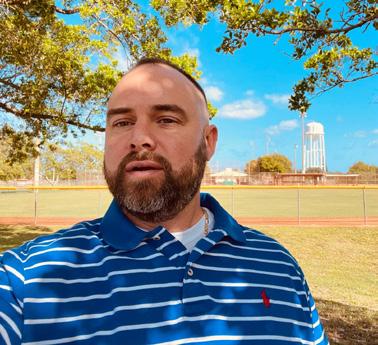
FWRJ READER PROFILE
In the control room, with supervisory control and data acquisition (SCADA), at the PGA Wastewater Treatment Plant.
A Palm Beach State College water class tours a membrane facility with John (third from right) and plant staff at the Village of Wellington.
John and colleague (left) at the water reclamation disinfection well.
Finished
water
contact
30 May 2023 • Florida Water Resources Journal
The water tower near the Hood Road Water Treatment Plant owned by Seacoast Utility Authority.
reuse
aeration
basin.



Complete Visibility in Full Wastewater Tanks SediVision®️ technology delivers unprecedented high-resolution image mapping of full wastewater tanks. Eliminate probing. Know with accuracy, where and how much material is under dark water. 844-765-7866 ©️2022 USST HOLDINGS, LLC ussubmergent.com sedivision.com
Benefits for All at the Florida Water Resources Conference
to meet with manufacturers, consultants, and others providing services to the water industry.
Understanding that people attend the conference with different goals in mind, FWEA has been working to bring extra value to its membership during the conference.

Events to Look for at FWRC
awardees. The luncheon ticket is included in a full registration for FWRC or for the one-day registration for Friday. Others can purchase tickets online from the FWRC website at www.fwrc.org.
Saturday, June 3
Whether managing a utility or a water recourses organization, the overall goal is to protect human health and the environment. Those who work in the water industry fully understand the value of water resources. One of the challenges facing the water resources industry includes the need to share this message with the public and to attract and engage a talented workforce. This challenge needs to be addressed by both public and private industries, and from all levels of these organizations, including field crews, administrative staff, marketing teams, and management.
Aside from fostering engagement with the employer, sending a variety of team members to the Florida Water Resources Conference (FWRC) would strengthen their knowledge of how to protect water resources and potentially provide a network of industry professionals to reach out to when needed.

The main activites at FWRC revolve around two broad categories: learning and networking. These activities include attending technical sessions for continuing education units (CEUs) and professional development hours (PDHs), and walking the exhibit hall
This year the conference will be held May 31 to June 3, starting on a Wednesday as opposed to a Sunday as in past years. To help you see the layout of events, here are a few activities that FWEA will present.
Wednesday, May 31
Starting on the first day come check out the Committees Showcase where you can learn about the different committees that FWEA, FWPCOA, and FSAWWA sponsor. These three organizations that make up FWRC will have people on hand to share information about what committees are available to get involved with. This will take place at the side stage in the exhibit hall from 5:30 to 6:30 p.m. during the presidents reception.
Friday, June 2
The annual meeting of FWEA will be held at its awards luncheon to approve the fiscal year budget, elect the new slate of officers, and present this year’s industry awards. All FWEA members are encouraged to attend the luncheon to participate in the voting of the budget and officers and to cheer on the
For those staying to the very end of the conference, the Student Design Competition will take place after the conclusion of the annual FWEA Utility Council meeting that will be held in the morning. Attendance for the Utility Council breakfast requires purchase of a ticket, but anyone is welcome to come watch the students present their projects beginning at 1 p.m.
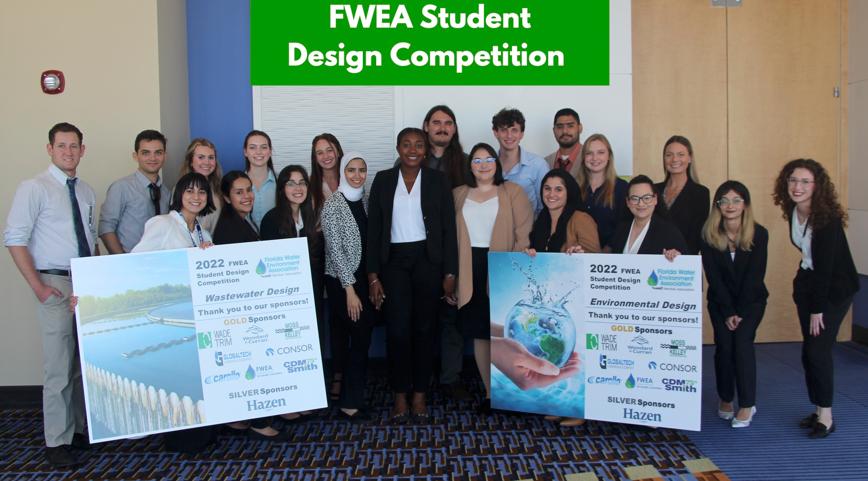
Throughout the Conference
Throughout the conference members are welcome to stop by and visit the FWEA booth, located in the same area as the FWPCOA and FSAWWA booths. Rumor has it that the inflatable FWEA chairs will be back this year.
A trip to FWRC would not be complete without watching some of the Operations Challenge. The teams will be competing in several events on Thursday, June 1, in the exhibit hall. Don’t be surprised to be called on to participate in a demonstration competition (as I was last year!).
Several of the FWEA committees will be holding in-person meetings during FWRC; look for details on room locations in the onsite program. Those that plan to hold meetings at FWRC include:
32 May 2023 • Florida Water Resources Journal
FWEA FOCUS
Sondra W. Lee, P.E. President, FWEA
Sondra Lee participates in the attendee relay event at the 2022 Operations Challenge.
Participants at the 2022 Student Design Competition.
S Biosolids Committee - 4 p.m., Wednesday, May 31
S Collections Systems Committee - 11 a.m., Thursday, June 1
S Utility Management Committee - 11 a.m., Thursday, June 1
S Wastewater Process Committee - 4 p.m., Thursday, June 1
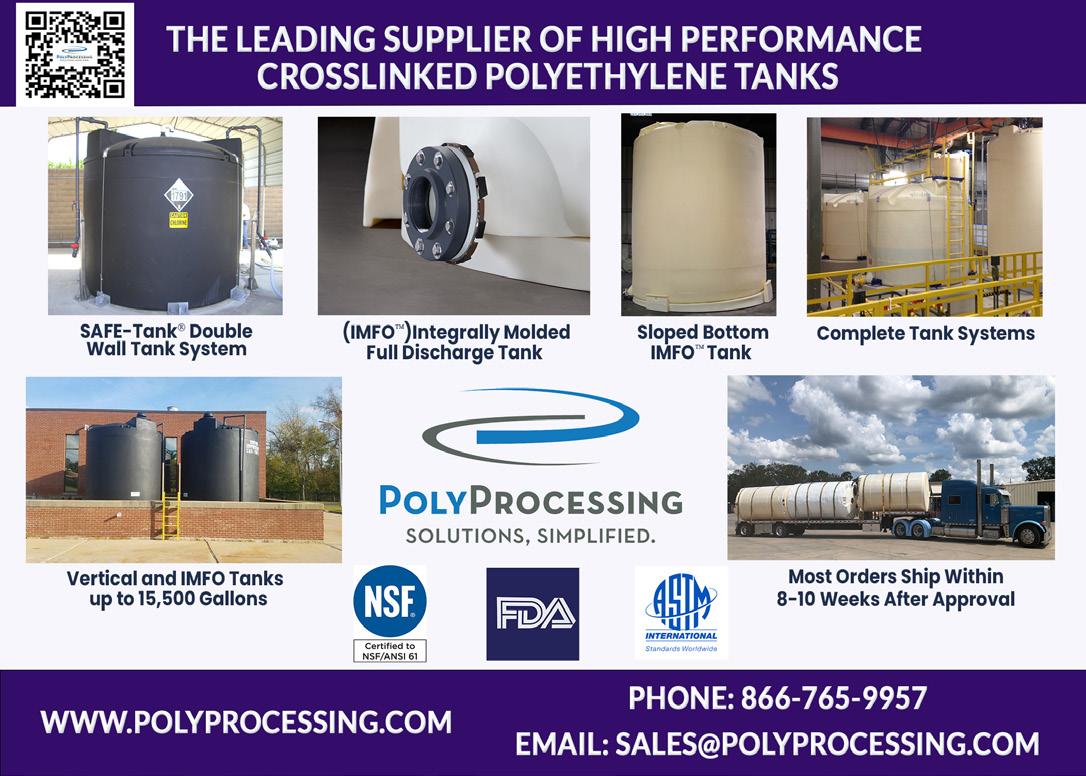
S Water Resources, Reuse, and Resiliency Committee; held jointly with FSAWWA Utility Council - 4:30 p.m., Thursday, June 1
S Students and Young Professionals Committee - 11 a.m., Friday, June 2
S Air Quality Committee - 1:30 p.m., Friday, June 2
The FWRC attendees are encouraged to stop by the Water Environment Federation (WEF) Water Stories venue in the exhibit hall. The WEF is working to amplify the stories of water to build community, strengthen partnerships, increase awareness and appreciation of working in water, and create individual stories of success. A team will be on standby in the rear stage area to record your water story.
The WEF Bookstore will also be available for anyone to browse during FWRC. Stop by the bookstore, which will at lounge area #803 in the exhibit hall.
Check out the FWRC conference schedule for more details about these events, along with several others taking place this year. The conference schedule can found in the “About” tab dropdown menu on the conference website mentioned previously.
Volunteer Opportunities Bring High Rewards at FWRC
To add some extra fun and networking to your FWRC experience, sign up to volunteer during the conference. There will be several opportunities to assist FWRC and the three supporting organizations. For example, here are some areas to help out with:
S FWEA booth set up: midday Wednesday
S FWRC badge pickup: select a couple of hours on Wednesday, Thursday, or Friday
S FWRC onsite registration: select a couple of hours on Wednesday, Thursday, or Friday
S Door checker at the exhibit hall: select a
couple of hours on Wednesday, Thursday, or Friday
S FWEA booth coverage: sign up for an hour or two at the FWEA booth

S Door checker at Monday’s FWRC luncheon
S Door checker at Tuesday’s FWEA luncheon
S FWEA awards luncheon room setup: Friday morning
S FWEA booth breakdown: Friday afternoon
Reach out to me if you have an interest in one of these volunteer opportunities at sondra.lee@talgov.com.
I hope to see you at the conference!
Florida Water Resources Journal • May 2023 33
S
Scholarships valued up to $7,000 will be awarded in both undergraduate and graduate categories by the Florida Section American Water Works Association.
Eligibility:
• Must be a student enrolled (not online) in a Florida university and living in Florida
• Must be a full-time student or part-time student enrolled and completing a minimum of 6 credits during the current semester. Student must remain registered for 6 credits and pass them successfully.
• Must be a student within 60 credits of graduation with a bachelor’s degree. Note: Seniors who are pursuing a graduate degree may apply and use the scholarship for their graduate studies, but must provide proof of acceptance to their graduate degree program.
• Maintain good standing in academic status with a GPA of 3.0 or higher based on a 4.0 system
• Must intend on pursuing a career in the water/wastewater field with a plan to remain in Florida to pursue their career (outlined by the applicant in the application)

• Or enrolled in one of the CIP educational codes (for a list visit fsawwa.org/2023Likins) and have indicated an interest in pursuing a career in the water/wastewater field
Added Value:
• All applicants receive 1-year free student American Water Works Association (AWWA) membership.
Key benefits of Student Membership:
• Jump-Start Your Career
• Gain Experience
• Stay Informed
WIN UP TO A $7,000 SCHOLARSHIP
Apply by June 30, 2023
For application, please visit: fsawwa.org/2023likins
34 May 2023 • Florida Water Resources Journal


Florida Water Resources Journal • May 2023 35





36 May 2023 • Florida Water Resources Journal




































Florida Water Resources Journal • May 2023 37









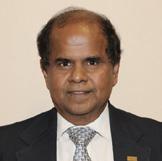


38 May 2023 • Florida Water Resources Journal

Operations Challenge: The World’s Most Exciting Operator Development Program
 Cody Diehl
Cody Diehl
Participating in the Operations Challenge program can greatly impact the trajectory of an operator’s career and improve a utility’s performance. With the essential public health and safety services we provide it’s essential that we continue to improve as the industry faces the challenges of per- and polyfluoroalkyl substances (PFAS), disinfection byproducts (DBPs), water scarcity, and more.
An Operations Challenge program has many benefits, both to the participants and the utility that supports the program. For the utility, it creates operators with the ability to troubleshoot under critical conditions. The program encourages operators to develop leadership skills and branch out in their overall skill set. The program also has the added benefit of bringing awareness to the “constant responder,” utility personnel that must perform the services they provide around the clock, even during natural disasters or other declared emergencies.
The Operations Challenge also has the benefit of helping to offset the “brain drain” as retirements and resignations continue to affect the transfer of knowledge from one generation of utility workers to another. Our goal as an industry should be to stockpile information from one generation to the next, improving our learning speed and knowledge to better serve our citizens.
It’s been said that the ability to create and
sustain an Operations Challenge program reflects the health of a utility. In my case, the program has also directly impacted my travels through my utility adventure.
To give you a better idea of the competition, I’ve included some photos of a couple of teams in various stages of a challenge, which include process control, maintenance, laboratory, collections, and safety.


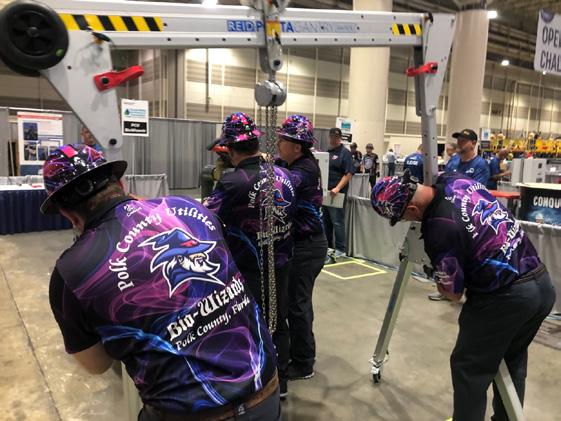
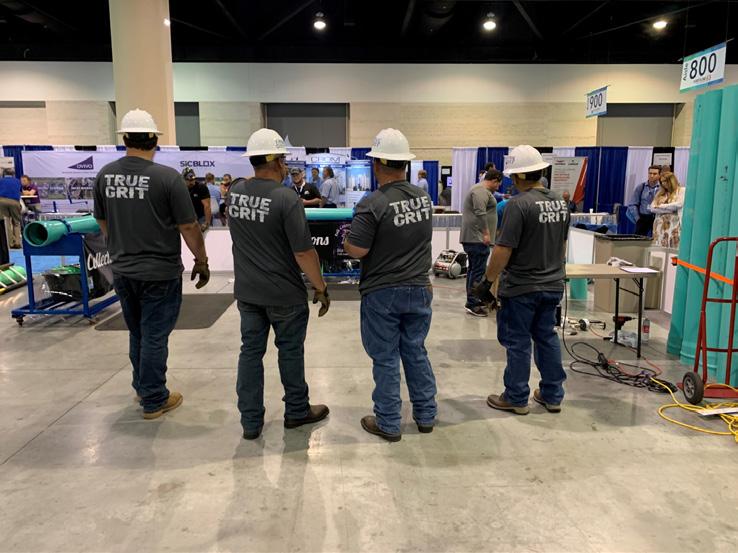
My Experience With Operations Challenge
In late 2018, I was recommended for our new Operations Challenge program at Polk County Utilities that was set to begin in 2019. At the time I was a level II distribution license holder. We traveled to Orange County to learn how to become a team—and learn we did! After a month of rigorous training, we participated in our first event at the 2019 Florida Water Resources Conference (FWRC). From that moment on our
where we could represent Florida at the national level.
We were unable to compete in 2020 due to staffing shortages (and the conference was cancelled because of COVID-19), but my career as an operator had been launched. Over the course of the next several years (and copious hours of overtime), I was able to pass the Florida Department of Environmental Protection (FDEP) drinking water treatment license tests with the incredible support of my supervisors.
In 2021 we began training again; FWRC was still suspended, but we had the opportunity to represent our utility at that year’s national competition at the Water Environment Federation Technical Exhibition and Conference (WEFTEC21). On the way we had to study and sharpen our skills, improving our times and abilities until the day of competition. We scored well enough for us to place third in our division and the privilege of moving up to the next division with only one year under our belt.
In 2022, we again had the privilege of representing Florida at the national level at WEFTEC22, along with teams from City of St. Petersburg and JEA. Each year, attending WEFTEC and other associated conferences and conventions, as well as the networking opportunities that are present at each, has greatly impacted both my expertise and that of our team. We have gained exposure to new technologies and methods, as well as developed strong industry contacts that will continue to benefit our utility for years to come.
time and I’m on a quest to obtain my wastewater treatment A license. I currently hold a drinking water treatment A license, distribution system I license, and wastewater treatment C license, and I’ve passed the state B wastewater exam. I’m excited to take the wastewater treatment A test soon; hopefully, it will be a challenging test. All of this would not be possible for me without the impact of the Operations Challenge, on both a personal and professional level.
Recently, during Hurricane Ian, our team development truly shined as we were able to use the skills we acquired during the competitions— in collections, pump maintenance, safety, process control, and the laboratory—to enhance our response to the emergency. From repairing water and wastewater lines to staffing water plants and bypass pumps, the echoes of our adventures were on full display.
A Positive Impact for the Community
While the definition of the “One Water” community varies, its core value is that all water, regardless of the source, has value, and this is an important idea that needs to be reinforced with the communities we serve. This is paramount to our success and the Operations Challenge has facilitated that connection.
Our Operations Challenge team also participates in water festivals, school programs,
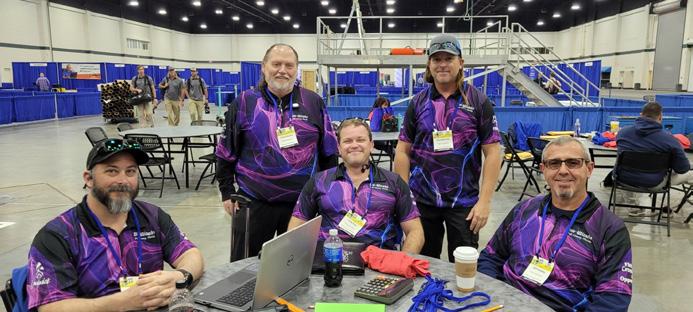
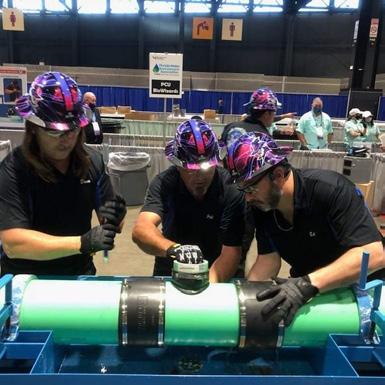
career expos, hiring events, and more. To see utilities represented, along with the traditionally considered first responders, like police officers and firefighters, helps the public make the connection to the important role utilities have in protecting public health and safety.
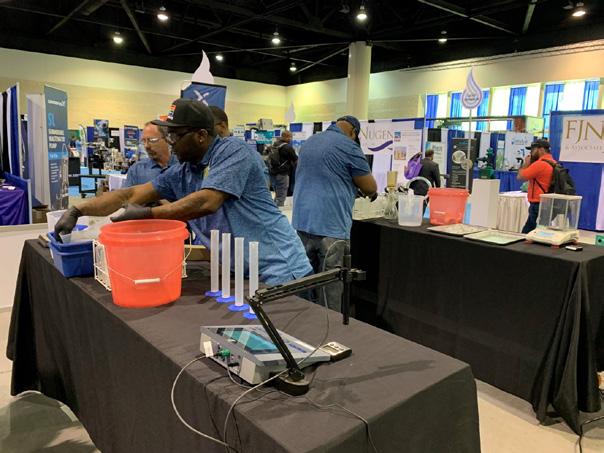


At a recent science, technology, engineering, and mathematics (STEM) event, we were able to connect with elementary school students and their families. The realization of utility work being fun and competitive appealed to many of the children and young people, as they learned how to use the laboratory and safety equipment we use in the Operations Challenge.
Who knows, many of our future operators many come from these programs as we imprint the value of the industry through community outreach.
A Benefit for the Industry
As many utilities are experiencing staffing issues, Operations Challenge can impact recruiting because of what the program represents: a premium work environment, positive attitude toward staff growth, supportive management, and a commitment to excellence in utility operations. This gives water field professionals confidence that their efforts will be appreciated, making the utility an attractive organization to start or advance their careers.
In the past two years we have been privileged to attend the Florida Water
Environment Association (FWEA) Leadership Development Workshop. This workshop has greatly impacted our team and our vision for the future. Along with a demonstration of some of the events held at an Operations Challenge, teams were organized from among the attendees to participate in a friendly competition to see who could complete the challenge selected in the shortest amount of time. The enthusiasm on display by the attendees for the One Water field was second to none! As an operator it’s incredibly encouraging to interact and work with these passionate people.
With each year in the program, we have the opportunity to tackle new challenges and conquer them: new techniques, equipment, resources, and training directly applicable to our goals as an industry. Many equipment suppliers use Operations Challenge as a showcase for their products, using the program to demonstrate what their equipment is capable of. Other vendors choose to sponsor the program on an annual level, allowing them to network with many innovators and decision makers in the industry.
As I look forward to the future of our utilities I see many incredible opportunities, many of which can be empowered and enhanced utilizing the irreplaceable utility development program known as Operations Challenge!
Florida Water Resources Journal • May 2023 41
Cory Diehl is a water pollution control treatment operator III at the Polk County Northwest Wastewater Treatment Plant in Lakeland. S
Welcome to the FWEA Chapter Corner! The Member Relations Committee of the Florida Water EnvironmentvAssociation hosts this article to celebrate the success of recent association chapter activities and inform members of upcoming events. To have information included for your chapter, send details to Melody Gonzalez at gonzalezm@bv.com.
FWEA Southeast Chapter: 21st Annual Broward Water Matters Day
Water Matters Day returned to Tree Tops Park in Davie for an in-person event on Saturday, March 11, 2023, from 9 a.m. to 3 p.m., with interactive educational displays and booths, a tree giveaway for Broward residents, food trucks, children’s activities, and more.
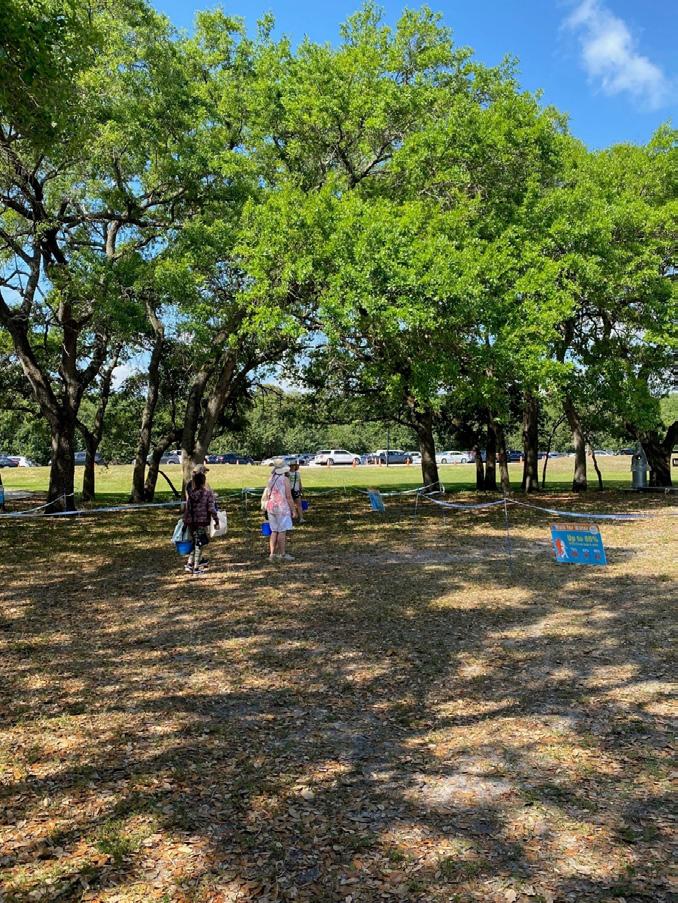
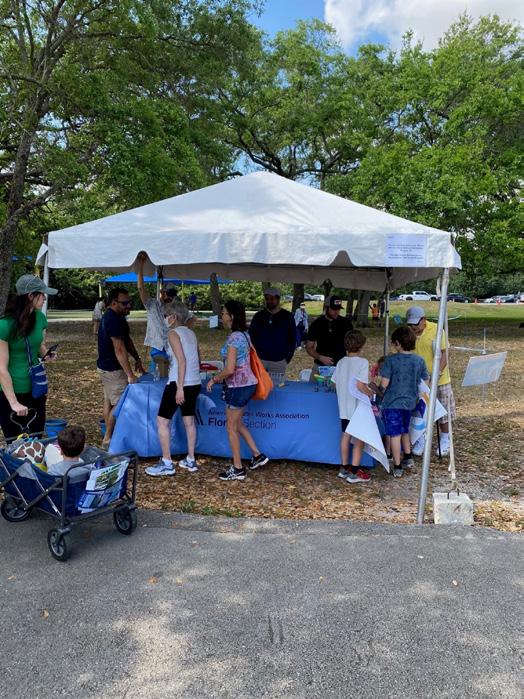
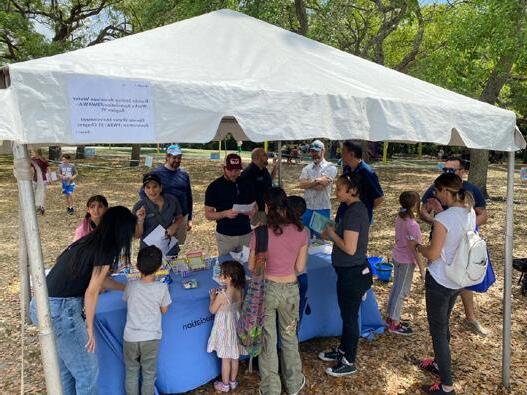
A Joint Effort
The FWEA Southeast Chapter joined forces with FSAWWA Region VI to have a joint booth at the event and the two groups provided volunteers throughout the day. They also prepared an interactive “Walk for Water” course for participants to learn about important water facts. At the end of
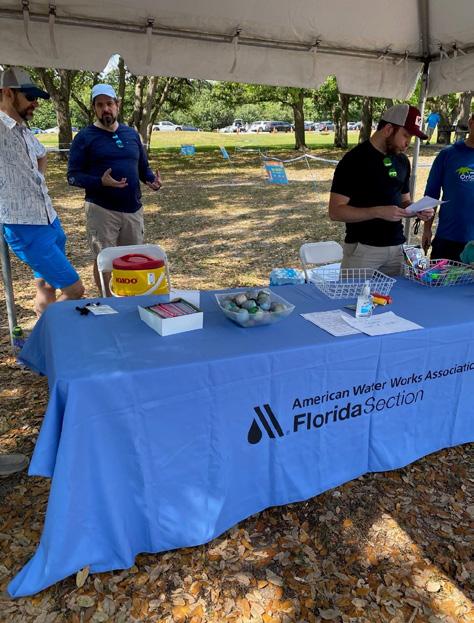
from children to adults—about water management and water conservation. The event was a conglomeration of multiple municipalities, water utilities, and drainage districts. Multiple demonstration projects were set up along the park to showcase the water environment.
We plan on continuing FWEA’s involvement in this fun and educational event next year. For more information on how you can get involved, please contact me at boteroi@bv.com.
Southeast Chapter Board
Our current board is comprised of the following members:
S Chair: Isabel Botero, Black & Veatch
S Vice Chair: Alexander Kramer, Thermal

42 May 2023 • Florida Water Resources Journal FWEA CHAPTER CORNER
Melody Gonzalez
FWEA Southeast Chapter volunteers at the booth at Water Matters Day.
FWEA Southeast Chapter volunteers and attendees.
The volunteers were from FWEA and FSAWWA.
Isabel Botero
Some participants on the Walk for Water course.


May 8-12 Region 7 Wastewater Collection C Course Pembrook Pines $325/325 15-18 Region IX Wastewater Collections B Course Deltona $325/325 16-17 ............... Region V Short School ...................................................................................... Port St. Lucie June 5-9 ............... Region 4 Reclaimed Water Distribution C.................................................... Pinellas Park ..................... $325/355 5-9 Region 4 Stormwater C Pinellas Park $325/355 5-9 Region 4 Stormwater A Pinellas Park $325/355 5-9 ............... Region 4 Utility Maintenance III ..................................................................... Pinellas Park ..................... $325/355 5-9 Region 4 Water Distribution Level 3 Pinellas Park $325/355 5-9 Region 4 Water Distribution Level 1 Pinellas Park $325/355 5-9 Region 4 Wastewater Collection A Pinellas Park $325/355 5-9 ............... Region 4 Wastewater Collection C ................................................................ Pinellas Park ..................... $325/355 6-9 Region 9 Water Distribution Level 2 Deltona $325 12-16 Region 4 Reclaimed Water Distribution B Pinellas Park $325/355 12-16 ............... Region 4 Stormwater B .................................................................................... Pinellas Park ..................... $325/355 12-16 ............... Region 4 Utility Maintenance II ...................................................................... Pinellas Park ..................... $325/355 12-16 Region 4 Wastewater Collection B Pinellas Park $325/355 12-15 Backflow Tester Deltona $375/405 19-23 ............... Reclaimed Water Field Site Inspector .......................................................... Deltona ............................. $350/380 19-23 Wastewater Collection A Orlando $325 19-23 Water Distributions Level 1 Orlando $325 Member/ NonMember/
Water Professionals Advocate for Policy and Water Conservation: AWWA Goes to Washington!
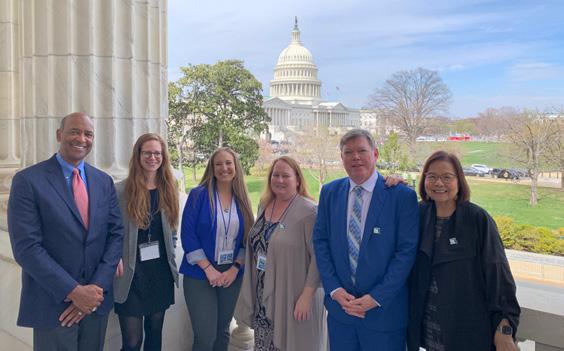
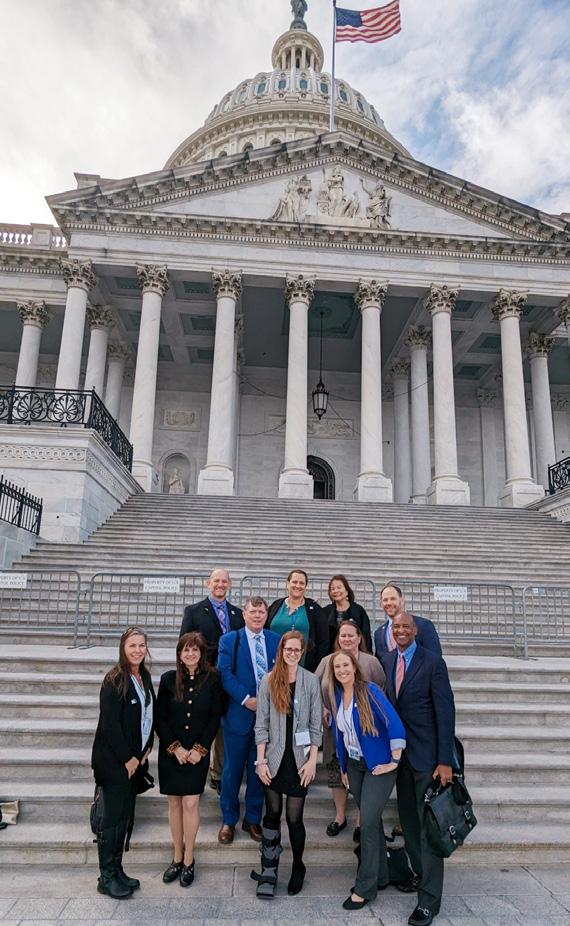 Greg D. Taylor, P.E.
Greg D. Taylor, P.E.

The 2023 AWWA Water Matters™ FlyIn! took place in Washington, D.C., in March. An annual tradition that started in 2001, delegates from multiple AWWA sections descended on the Capitol to meet and inform our congressional members about national issues that require attention and remind them that we are their drinking water experts. These national issues can help frame laws, such as the Water Infrastructure Finance and Innovation Act (WIFIA).
Eleven people from the Florida Section AWWA (FSAWWA) attended and advocated for infrastructure funding, cybersecurity, and federal legislation to help utilities manage per- and polyfluoroalkyl substances (PFAS) impacts. The attendees from the section (including me) were:
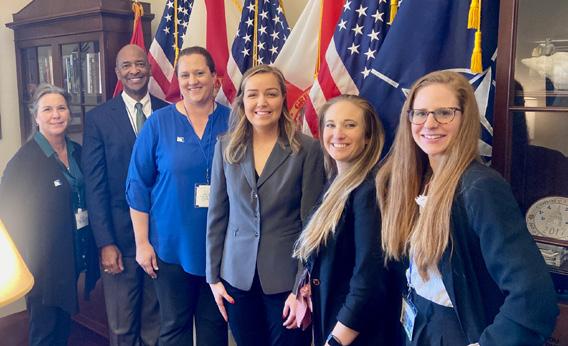
S Monica Wallis, FSAWWA Water Utility Council chair - Destin Water Users
S Kevin Carter, FSAWWA treasurer-electBroward County
44 May 2023 • Florida Water Resources Journal FSAWWA SPEAKING OUT
Section members meet with Beatrice Valenti (center), legislative assistant in Rep. Neal Dunn’s office.
At left: FSAWWA delegation at the steps of the Capitol!
Outside Rep. Carlos Gimenez’s office.
S Lisa Wilson-Davis, FSAWWA vice chair - City of Boca Raton
S Marjorie Craig, FSAWWA chair-elect - Village of Tequesta
S Terri Holcomb, FSAWWA secretary - Peace River Manasota Regional Water Supply Authority
S Tara Lamoureux, City of Casselberry
S Wayne Young, JEA, vice president of environmental services
S Shay Hill, JEA government relations
S Sarah Burns, Carollo Engineers
S Peggy Guingona, FSAWWA executive director
Current Water Issues
Infrastructure Funding
In Florida, our utilities use various means to fund infrastructure maintenance and replacement. The State Revolving Fund (SRF) programs (drinking water and clean water) provide low-interest loans to utilities to help fund studies and capital improvement projects to better serve the public and protect our water supplies. Fun fact: The federal funds that support these programs must be approved by Congress every year, and in 2022 over 30 percent of those funds were channeled to earmarks; for 2023 it was over 50 percent.
We called on Congress to stop diverting the funding from these important programs and continue to support funding for our water infrastructure. Our request also included ensuring that the 10 percent set-aside for source water protection is protected in the annual Farm Bill introduced in Congress.
The WIFIA celebrated its 100th loan this last month, which is a tribute to the efforts to educate Congress and yield positive impacts.
Cybersecurity
Cybersecurity is an ever-present concern for Florida. In the last decade, we have had some utilities impacted by external forces that wished to disrupt our systems and possibly cause harm. In some cases, bad actors have used ransomware that impacted municipalities or counties, causing utility workers to work extra hard to protect the public health. Luckily, our Florida operators and distribution workers are trained to handle these situations and use their experience to know what to look for to prevent danger.
The U.S. Environmental Protection Agency (EPA) has mandated that, during the triannual sanitary surveys of drinking water facilities, cybersecurity must be reviewed. Unfortunately, the people performing these surveys are not trained in the nuances of cybersecurity. To address this issue, our section is proposing a co-regulaotry model, very much like the
one used in the energy sector, where EPA has oversight, but there is a knowledgeable agency acting as a resource identifying—and then helping—utilities enhance their defenses against cybersecurity intrusions through training and funding support.
Per- and Polyfluoroalkyl Substances
A group of chemical compounds, PFAS do not break down easily and have been integrated into every aspect of our daily lives to the point that over 95 percent of us in the United States have trace amounts in our blood! When something is that pervasive and has been deemed a hazardous compound, utilities are taking actions to test and then remove PFAS if they’re found in our water supplies. Typically, granular activated carbon (GAC) or ion exchange (IX) is used to filter the water and remove the PFAS. The issue with these processes comes in when we have to deal with the disposal of the spent material. Also, when we treat wastewater, our biosolids can contain trace amounts of PFAS and utilities have to manage their disposal.
Because these compounds are under the umbrella of the Comprehensive Environmental Response, Compensation, and Liability Act (CERCLA), which is also known as Superfund, it’s possible that utilities could be made to pay for cleanup of the site used for the disposal of biosolids, even though these compounds are manufactured by others and we are just the receivers of the compounds. We are advocating to protect utilities from liability in these cases; otherwise, the costs associated with this liability could lead to a severe increase in rates for our customers, impacting affordability and causing
an unfair burden. The EPA has estimated that the proposed CERCLA PFAS rule could cost drinking water systems across the U.S. $3.74 billion per year.
Other Items of Interest
Tommy Holmes works for AWWA’s Government Affairs Office in Washington, D.C., and this was his last Fly-In. He is retiring so he and his wife can travel and take lots of pictures. For those of you who know him, reach out soon to thank and congratulate him. His efforts to arrange the AWWA D.C. Fly-In has helped our industry in many ways, leaving such a positive legacy.
Happy Water Safety Month! After celebrating water conservation in the month of April, we celebrate water safety. Pools, beaches, lakes, rivers, and streams are all used for many fun recreational activities and we need to remember to protect our natural resources and take safety measures to also protect our own health and safety.
Drinking Water Week is May 7-13! Please get the word out on how important drinking water is to our survival. Remember: No Water, No Life! Look out for proclamations from your local government leaders.
Resources to Learn More
Want to learn more about the AWWA Water Matters™ Fly-In? Go to the following link:
• https://www.awwa.org/AWWA-Articles/ awwa-fly-in-delegates-take-water-matters-tocongress. S

Florida Water Resources Journal • May 2023 45
Talking with Jonathan Vecchi (left), deputy chief of staff/legislative director, in the office of Rep. Gus Bilirakis.
Horizontal Directional Drilling and High-Density Polyethylene Pipe: A Perfect Match
 Lawrence Slavin
Lawrence Slavin
History
The ASTM (originally known as the American Society for Testing and Materials) F1962, Standard Guide for Use of Maxi-Horizontal Directional Drilling (HDD) for Placement of Polyethylene Pipe or Conduit Under Obstacles, Including River Crossings, was originally approved in 1999, following development within the F17.67 Trenchless Technology Subcommittee of ASTM, reissued in 2005 and 2011, and previously reinstated in 2020. The corresponding changes to the document, if any, were minimal, including providing additional or updated references, as well as correcting a typographical error in one of the equations. The most significant reference was to the alternative guidelines TR-46 provided by the Plastics Pipe Institute and its municipal advisory board (MAB), which has been superseded by MAB-7, which is considered more appropriate for mini-HDD operations.
The latest revision of ASTM F1962, approved in 2022, contains a significant change by providing the physical properties for the most recent high-density polyethylene (HDPE) material, PE4710. This material is significantly
tougher than older, previously used PE products, facilitating successful completion of morecomplicated, difficult maxi-HDD projects. The allowable pulling loads are based on a minimum tensile yield strength of 3,500 pounds per square inch (psi), with a significant reduction to limit nonrecoverable viscoelastic deformation, as well as to account for the effective cumulative load duration on the pipe (assumed to be 12 hours), resulting in a safe pull stress of 1,330 psi. Its convenient methodology for selecting an appropriate pipe strength (wall thickness) based on the project characteristics, has led to its increasing popularity and widespread usage within the water industry. A description of ASTM F1962, and its application, was provided during industry events and conferences, including NO-DIG (Slavin and Petroff, 2010) and American Society of Civil Engineers (ASCE) Pipelines (Petroff, 2010) in 2010. The ASTM F1962 is the only available ASTM standard for HDD.
Overview
The ASTM document provides overall guidelines for a maxi-HDD operation (Figure 1), addressing preliminary site investigation, safety and environmental considerations, regulations
and damage prevention, bore path layout and design, implementation, and inspection and site cleanup. One of the most significant contributions of ASTM F1962 is the provision of a rational, analytical method for selecting the pipe strength based on the estimated installation loads on the PE pipe. Thus, ASTM F1962 provides a means of determining project feasibility, as well as initial design information. Such results could be further refined by competent engineering expertise, including an analysis of pipe and soil characteristics and interaction, often including the use of relatively sophisticated software tools, possibly based on the ASTM F1962 methodology. The procedure is straightforward and has been incorporated into various software tools, e.g., PPI Boreaid® (www.boreaid.com, www.ppiboreaid.com), as an engineering and design aid for such projects.
The ASTM standard specifically addresses PE pipe, a flexible product, for which the effects of any bending stiffness on drag forces at route bends or path curvature may be ignored. Relevant material properties for PE pipe, such as safe pulling tension/ stress, are also provided in the document. Because of its high ductility and flexibility, and the ability to be fused in continuous lengths, per the wellestablished ASTM standards and by experienced contractors, PE pipe, particularly HDPE, is the most commonly used product for HDD projects.
Although ASTM F1962 is intended for carefully designed, well-controlled maxi-HDD installations, the methodology has been extended, via appropriate assumptions and mathematical simplifications, to provide a simpler methodology that may be advantageously applied to typical, lesswell-controlled mini-HDD projects. This is the basis of MAB-7 (2020), as referenced in the 2022 edition of ASTM F1962.
Description
Figure 2 illustrates a typical geometry for a maxi-HDD operation; in this case, corresponding to a river crossing. The indicated bore/pipe path comprises three segments spanning the pipe entry (point A) to its exit point (point D), with horizontal projected distance Lbore equal to the sum of the three horizontal (projected) segments L2, L3, and L4. There is an additional length L1 exterior to the drilled path, that allows for handling at both ends and possible other effects (path curvature, thermal
46 May 2023 • Florida Water Resources Journal
Figure 1. Typical maxi-horizontal directional drilling operation. (Courtesy of Murphy Pipeline Contractors)
contraction, stretching, etc.). The intermediate horizontal segment, L3, may be of zero length, similar to the geometry in Figure 1.
The ASTM F1962 contains 10 main chapters or sections, as briefly described, including in several appendices.
Scope, Referenced Documents, and Terminology (Sections 1, 2, and 3)
The ASTM F1962 addresses the overall planning and design, product selection, and installation practices for the placement of PE pipe using maxi-HDD equipment. The primary focus is on commonly used HDPE pipe with a material designation code of PE4710. For the larger diameters typically used for such applications, the PE pipe is supplied in discrete segments that are fused together in the field, with essentially no loss in tensile strength, facilitating the pulling operation.
Preliminary Site Investigation (Section 4)
Both ends of the bore path must be investigated to confirm their feasibility for successfully completing the installation of the large, long pipeline. The drill rig and auxiliary equipment, located on the pipe exit side, are relatively large and require water access, storage and mixing, and pumping facilities. The pipe entry side, opposite the drill rig, must accommodate the long length of assembled (fused) pipe. In addition, there should be a detailed subsurface investigation, including test borings and soil analysis, to confirm the general suitability for the drilling operation and to determine the appropriate equipment and hardware.
Safety and Environmental Considerations
(Section 5)
Safety is a primary concern during any activity, including construction utilizing maxiHDD equipment and procedures. Potential safety issues fall into two general categories:
S Those directly related to the setup and operation of the maxi-HDD equipment and the machine and hydraulic operations, as well as the drilling fluid under high pressure.
S Those associated with accidentally striking buried electric power lines or other existing pipelines.
Although not considered to be a hazardous material, the proper handling and disposal of drilling fluids is also discussed to avoid possible environmental issues.
Regulations and Damage Prevention
(Section 6)
Depending on the location and extent of the operation, a variety of permits or approvals may be required, possibly from federal, state, or local jurisdictions. These may include the need to file environmental, health, and safety plans, or permits
for passing beneath waterways, and there may be special requirements for drilling beneath railroads.
Bore Path Layout and Design (Section 7)
The planned bore path, shown in Figure 2, must be consistent with the steering capability of the maxi-HDD equipment, as well as the bending capability of the drill rods. The stiffness of the steel drill rods determines their allowable curvature in order to avoid fatigue. Unnecessarily large curvatures (sharp bends) also contribute to bending stresses in the HDPE pipe, although they are generally not significant for such a flexible product. Additional route bends, beyond those shown in Figure 2, as well as possible bends in the horizontal plane, should be avoided and will increase the required pulling forces.
Pipe Design and Selection Considerations
(Section 8)
Any pipe installed by HDD is subject to loads of a different type and/or magnitude than that experienced in other construction methods, including by direct burial in a trench. In addition to external pressures due to the head of the relatively dense drilling fluid/slurry or subsequent (postinstallation) soil loads, the pipe must withstand the axial tensions induced during the pullback process.
While the document provides useful information for evaluating the potential for collapse under lateral pressures, either during or following the installation, the most widely used portion of ASTM F1962 is the set of formulae for estimating the pulling tensions corresponding to the leading end of the pipe reaching points A, B, C, and D. These formulae account for the frictional drag acting on the pipe along the surface
of the borehole, primarily due to the high buoyant weight of the HDPE pipe within the relatively dense drilling fluid (especially for vacant pipe), but it’s sufficiently general to consider the possible implementation of antibuoyancy measures to reduce these otherwise high frictional forces. (The theoretical basis for the formulae for estimating the required pulling force is provided later.) Thus, a commonly used procedure for difficult or very long installations is to fill the pipe with water to reduce the buoyancy. In the absence of ballast, the maximum total calculated tension will typically occur toward the end of the installation; e.g., at point C or D.
The net resulting peak tensile stress is required to be less than the safe pull tensile stress of the HDPE pipe. The physical properties of the PE material(s) are provided in the appendices, which allow a determination of an appropriate wall thickness for the pipe, depending on the pipe diameter and estimated peak pulling force (or tendency to collapse). Software tools, such as Boreaid (mentioned previously) are based on the ASTM F1962 document and model.
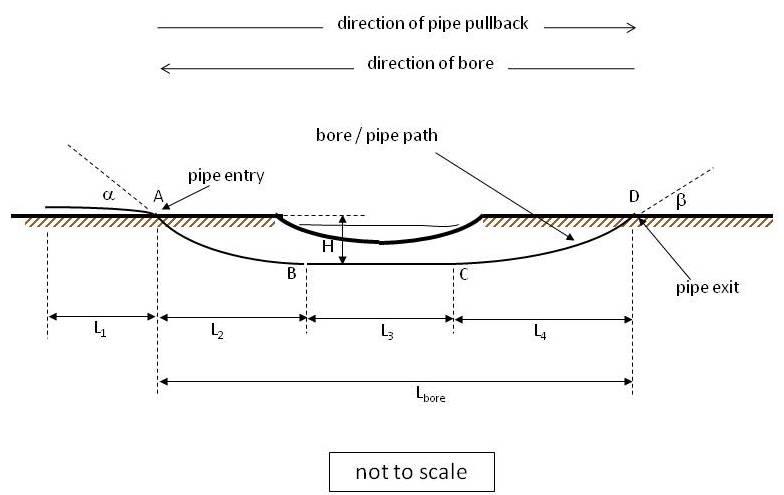
Implementation (Section 9)
Due to the magnitude and complexity of maxi-HDD equipment and control systems, a well-trained, experienced crew is essential to plan and execute the operation. The initial decision involves selecting the size and capacity of the machine, which, at a minimum, should be able to provide the necessary pulling force based on the estimated required pulling force for the pipe itself, with possible additional capacity for accomplishing reaming. It’s important to properly use the drilling fluid for the initial pilot
Continued on page 48
Florida Water Resources Journal • May 2023 47
Figure 2. Typical maxi-horizontal directional drilling route (obstacle or river crossing). (Courtesy of Outside Plant Consulting Services Inc.)
bore and reaming operations, and to accurately locate and track the bore path. The pipe must be securely gripped, including a swivel and possible breakaway link. As-built drawings must be provided, preferably supplemented with details of the soil characteristics and drilling operation.
Inspection and Site Cleanup (Section 10)
The HDPE pipe should not be cut prematurely, but should first be allowed to reach mechanical and thermal equilibrium to avoid shrink back onto the bore hole. The exposed leading end of the pipe should be inspected for possible damage, and a pressure or leakage test may be required for fluid transport applications.
Appendices
The 10 main sections outlined here are supported by several appendices at the end of the document that provide the physical properties of the HDPE (PE4710) material, as well as a means of determining the postinstallation loads and pipe deflection.
Theoretical Basis for Load Estimation
The theoretical model used to develop the formulae for estimating the peak required tension assumes that the local frictional drag forces on the pipe are proportional to the local normal bearing forces applied at the pipe surface. For flexible PE pipe, with minimal bending stiffness, the considered bearing forces are those due to the dead (empty) weight of the pipe where above ground, the buoyant weight of the submerged pipe (possibly reduced by the use of ballast), or
the bearing forces resulting from (previously induced) pipe tension tending to pull the pipe snugly against any curved surfaces. In addition, there is a contribution due to the drilling fluid/ slurry flowing along the length of the pipe, which is relatively low based on the present model.
Frictional Drag Due to Weight and Buoyancy
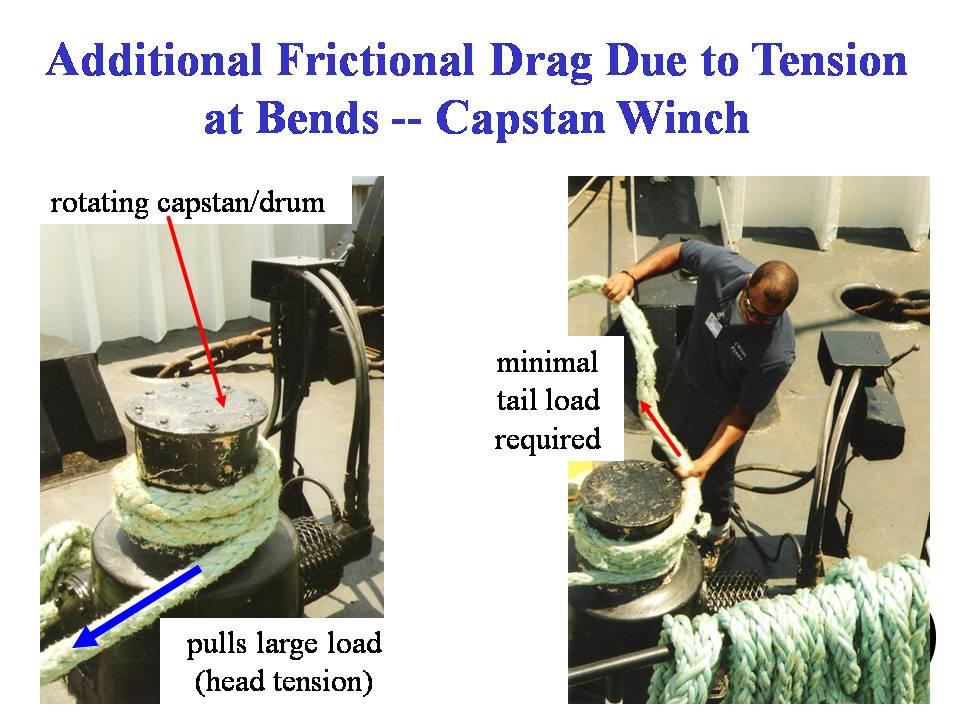
In the absence of antibuoyancy techniques, such as internal water ballast, the frictional drag developed within the borehole is generally much greater than that developed outside because of the high buoyant weight for an empty PE pipe. For such cases, the buoyant weight of the submerged pipe, in combination with the corresponding frictional characteristics, is the major factor in determining the required pull force. The ASTM F1962 provides formulae for determining the buoyant weight under various conditions. The buoyant weight is a function of the density of the drilling fluid/slurry, for which a conservatively high value is suggested for design purposes.
Capstan Effect at Bends
Although pipe stiffness effects may generally be ignored for flexible PE pipe, there is, nonetheless, a potentially important effect due to route bends or any path curvature that can be significant. Tensions induced in the PE pipe as it passes any curve become amplified because the tensile forces tend to pull the pipe against the curved surface. Such effects are independent of the pipe stiffness, pipe diameter, borehole clearance, and radius or direction of curvature, and, in some cases, become major considerations due to their compounding effect. This phenomenon is referred
to as the “capstan effect” as it’s the principle of the capstan winch, as illustrated in Figure 3.
For the geometry shown in Figure 2, with relatively shallow entry and exit angles, the associated load amplification due to this effect is not major, although for more complex paths, the effect could be very important. Mini-HDD applications, for instance, tend to contain bore paths with additional curvature because of the need to avoid known obstacles or follow a curved right of way, as well as more-subtle curvature due to path corrections characteristic of these typically less-precisely-controlled installations.
Hydrokinetic Surface Drag (Fluidic Drag)
The effect of the shear forces directly imparted on the surface of the pipe by the drilling fluid (“fluidic drag”) has been handled in a widely disparate manner within the industry, and is sometimes considered to be a major consideration. In contrast, the convenient model employed in ASTM F1962 results in a very low magnitude effect, which is directly added to the estimated pulling forces due to the frictional drag, including the capstan effect.
Summary
The 2022 edition of ASTM F1962 has revised the relevant physical characteristics of the PE materials, providing the physical properties for the most recent HDPE material, PE4710. This material is significantly tougher than older, previously used PE products, facilitating successful completion of morecomplicated, difficult maxi-HDD projects. The physical properties of the PE4710 material allow greater pulling forces and also provide greater resistance to collapse.
References
• Standard Guide for Use of Maxi-Horizontal Directional Drilling for Placement of Polyethylene Pipe or Conduit Under Obstacles, Including River Crossings, ASTM F1962 – 22. American Society for Testing and Materials, 2022.
• MAB Guidelines for Use of Mini-Horizontal Directional Drilling for Placement of HDPE (PE4710) Pipe in Municipal Applications, MAB-7 2020. Municipal Advisory Board, Plastics Pipe Institute, 2020.
• Directional Drilling Design with ASTM F1962: A Decade of Success. L. Petroff. ASCE International Pipelines Conference 2010.
• Discussion of ASTM F1962 or “How are the Pulling Load Formulas Derived and How are They Used?” L.M. Slavin and L Petroff. NODIG 2010.
48 May 2023 • Florida Water Resources Journal
Lawrence Slavin, Ph.D., is a principal at Outside Plant Consulting Services Inc. in Rockaway, N.J. S
Continued from page 47
Figure 3. Example of the “capstan effect.” (Courtesy of Outside Plant Consulting Services Inc.)
FWPCOA REGION IV IS PLEASED TO ANNOUNCE

OUR JUNE 2023 SHORT SCHOOL
WILL BE OFFERING CERTIFICATION AND CEU COURSES
Anyone attending any Water Distribution, Reclaimed or Supervision classes required to provide own manual from California University
All courses will be given at Pinellas Park
Classes 7:30 AM – 4:00 PM, Exam 8:00 AM – 11:00 AM 6250 82nd Avenue, Pinellas Park, FL 33781
Room assignment given at reg istration.
Cost is $325/$350 Members/Non-Members/$80 Exam Only (if applicable)
$125.00 Member/Non-Member Abbreviated Reclaimed Water Distribution Course and Exam
Exams - Friday 8:00 A.M. – 11:00 A.M. Pinellas Park, 6250 82nd Avenue, Pinellas Park, FL 33781
CREDIT CARD payment available at below link
https://fwpcoa.clubexpress.com/docs.ashx?id=259937
For questions, please contac t Jeff Pfannes
jpfannes_fwpcoa@outlook.com / (727) 686- 2633
Florida Water Resources Journal • May 2023 49
COURSE COURSE NO CEU’S DATES Utilities Maintenance Level 3 DS/DW/WW02014057 3.0 CEU June 5 – 9, 2023 SUPERVISION and Stormwater A Water Distribution Level 1 Wastewater Collection A DW/DS/WW02004042 3.0 CEU June 5 – 9, 2023 Water Distribution Level 3 DW/DS02004043 3.0 CEU June 5 – 9, 2023 Reclaimed Water C DW/DS/WW02014124 3.0 CEU June 5 – 9, 2023 Stormwater C DW/DS/WW 02014026 3.0 CEU June 5 – 9, 2023 Wastewater Collection C WW02014034 3.0 CEU June 5 – 9, 2023 Water Distribution Level 2 DW/DS02004040 3.0 CEU June 12 – 16, 2023 Reclaimed Water B DW/DS/WW02014123 3.0 CEU June 12 – 16, 2023 Utility Maintenance level 2 DS/DW/WW 02014170 3.0 CEU June 12 – 16, 2023 Stormwater B DW/DS/WW02014025 3.0 CEU June 12 – 16, 2023 Wastewater Collection B WW02004041 3.0 CEU June 12 – 16,
2023
AMWA Announces 2023 Management Recognition Awards Honoring Water Utility Achievements and Individual Contributions
For more than two decades the Association of Metropolitan Water Agencies (AMWA), headquartered in Washington, D.C., has provided drinking water utility recognition programs that honor extraordinary management and stellar workforce performance.

2023 Awards
The AMWA opened its annual awards program in March 2023 and invites all eligible AMWA member utilities to apply for the awards. The award submission period will close on July 14, 2023.
A distinguished panel of peer judges will evaluate award applicants this summer and AMWA will present the awards at its 2023 Executive Management Conference, to be held October 22-25 in San Diego. In addition, award winners will receive local, national, water industry, and public utility media recognition.
Utility Recognition
The association’s utility recognition program honors extraordinary management and stellar workforce performance through a progressive series of awards that any number of AMWA member utilities may win:
S Gold Award for Exceptional Utility Performance
S Platinum Award for Utility Excellence
S Sustainable Water Utility Management Award
Individual Recognition
The AMWA also honors individual accomplishments in the drinking water field through its President’s Award and Donald R. Boyd Award. Recipients of these awards are determined by the association’s Nominations Committee. Nominations are also solicited in the summer by a bulletin from AMWA’s national office.
Award Categories
Gold Award for Exceptional Utility Performance
The AMWA Gold Award for Exceptional Utility Performance recognizes large public drinking water systems that exhibit high levels of performance in the following areas:
S Product quality
S Customer satisfaction
S Employee and leadership development
S Operational optimization
S Financial viability
S Community sustainability
S Enterprise resiliency
S Infrastructure strategy and performance
S Stakeholder understanding and support
S Water resource sustainability
These are the “Attributes of Effectively Managed Utilities” that were identified in 2007 by a blue-ribbon panel of water and wastewater utility executives commissioned by the U.S. Environmental Protection Agency (EPA), AMWA, and other water-related associations. The document was updated in 2016.
Gold Award winners also show achievement in the areas of leadership, strategic business planning, knowledge management, measurement, and continual improvement management. All AMWA member utilities that have never won a Gold Award are eligible to apply.
Platinum Award for Utility Excellence
Like the Gold Award for Exceptional Utility Performance, the criteria for the Platinum Award for Utility Excellence are also based on the “Attributes of Effective Utility Management” and the “Keys to Management Success.” Applicants are expected to show progress in implementing the attributes and keys, as well as a distinctive level of management expertise and expanded utility achievement.
Three years after winning a Gold Award, member utilities are eligible to apply for the Platinum Award for Utility Excellence. Past winners of AMWA’s Platinum Award for Sustained Competitiveness Achievement are also eligible to apply.
Sustainable Water Utility Management Award
The AMWA Sustainable Water Utility Management Award, introduced in 2014, recognizes member utilities that have made a commitment to sustainable management. While there are many opportunities available to water utilities to be managed more sustainably, there is no perfect path to get there. Each water system has its own water resource needs, infrastructure issues, financial position, political issues, energy costs, and other challenges.
This award views sustainability through a triple-bottom-line lens. This means winners will have achieved a balance of innovative and successful efforts in areas of economic, social, and environmental endeavors, such as responsible management of resources, protection of public health, meeting responsibilities to the community, and providing cost-effective services to ratepayers.
President’s Award
The AMWA President’s Award is given to individuals who have made outstanding contributions to the improvement of water supply management. Eligibility for this award is limited to individuals currently or formerly representing AMWA member agencies and it recognizes their efforts and dedication in the field of drinking water supply.
This award is presented to individuals who have made outstanding contributions to improving water supply management. Individuals nominated for this award must hold, or have held, a major position with a water supply agency, while actively participating as a member of AMWA.
Donald R. Boyd Award
The Donald R. Boyd Award acknowledges extraordinary personal service in the drinking water field. General criteria may include valuable service that advances public understanding and awareness, water quality research, or more general contributions deserving of recognition. This award confers recognition to individuals who have made important contributions to the water industry, including as water system employees (regardless of AMWA membership), government officials, or private consultants.
The award commemorates Donald R. Boyd, one of AMWA’s founding members and its first president.
New Environmental Justice Award
As the newest addition to AMWA’s independent awards program, the Environmental Justice Award recognizes member utilities that commit to advancing equity and justice in their communities.
The general criteria include:
S Using assessment and planning
S Equity in access and costs
S Civic involvement in decision making
S Integrative strategies
About the Association
An organization of the largest publicly owned drinking water systems in the United States, AMWA’s membership provides more than 156 million people–from Alaska to Puerto Rico–with safe drinking water.
It’s the only policy-making organization in the U.S. solely for metropolitan drinking water suppliers. The association was formed in 1981 by a group of general managers of metropolitan water systems who wanted to ensure that the issues of large publicly owned water suppliers
would be represented in Washington. Member representatives to AMWA are the general managers and chief operating officers of these large water systems.
The association represents the interests of these water systems by working with Congress and federal agencies to ensure that federal laws and regulations protect public health and are cost-effective. In the realm of utility management, AMWA provides programs, publications, and services to help water suppliers be more effective, efficient, and successful.
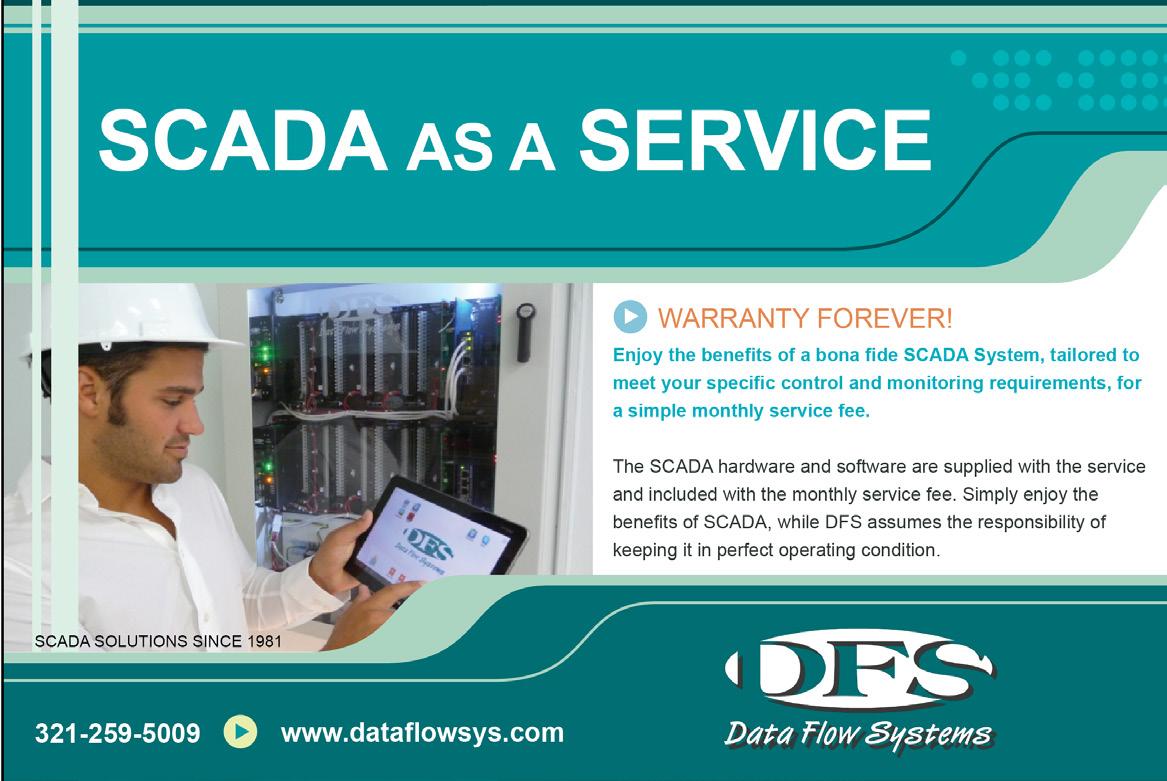
Governed by a 22-member board of directors, AMWA represents all regions of the U.S. Committees on utility management, regulations, legislation, sustainability, and security provide the expertise to achieve the goals of water suppliers, including sustainable operations, regulations based on sound science, and cost-effective laws that support the safety and security of drinking water.
Award Information
For questions on award eligibility or to request an application form, contact Antoinette Barber at 202-331-2820. S
Florida Water Resources Journal • May 2023 51
Southeast Florida Receives Record Rainfall


Fort Lauderdale and other communities across southeast Florida are working to get life back to normal after receiving record-breaking rain and flooding in the area that closed transportation hubs, schools, businesses, and government offices.
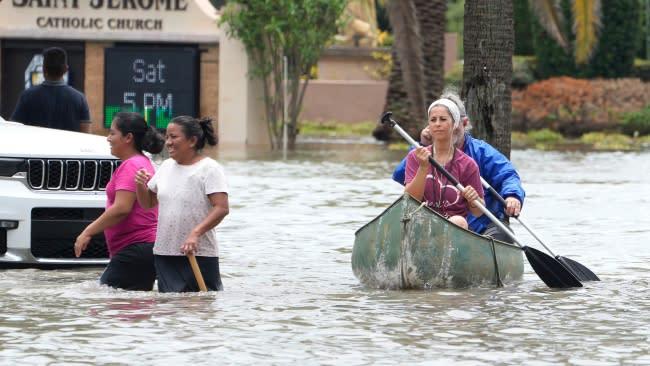
During the peak of the early-April storms, a month’s worth of rain fell in just one hour. The ground was already saturated, so there was extensive flooding all over the city and throughout south Florida. Many of Fort Lauderdale’s streets turned into lakes when rain exceeding 2 feet inundated the city and surrounding areas.
First Responders Met the Challenge


Fort Lauderdale fire rescue crews received over 1100 calls during the flooding, according to Dean Trantalis, Fort Lauderdale mayor. There was a report of two firefighters sustaining minor injuries after they were shocked by an electrical wire.
As floodwaters receded, first responders continued conducting wellness checks and assisting residents in need of shelter. Crews
were on the ground meeting the needs of the public one by one and bringing them food, water, and first-aid supplies.
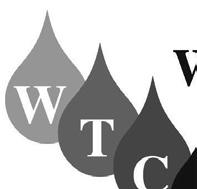
Utility crews throughout the Fort Lauderdale metropolitan area have been working to clear drains and deploy pumps where possible to help alleviate the effects of flooding.
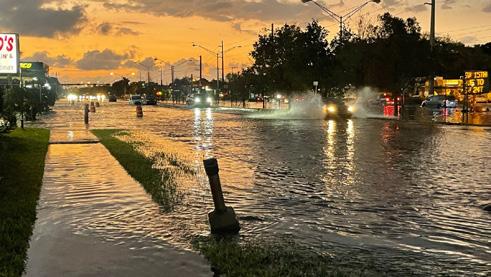
All Transportation Affected



The flooding shut down the Fort Lauderdale-Hollywood International Airport for about 40 hours, frustrating air travelers who could not leave the airport. The rapid rain also interrupted rail service and made driving dangerous for motorists. Some roadways were impassable; many vehicles got stuck and were left abandoned in the middle of the street.
Florida Gov. Ron DeSantis issued a state of emergency for Broward County to provide additional resources to crews and residents on the ground. S

52 May 2023 • Florida Water Resources Journal Factory Trained Technicians - Emergency Repair Services - PM Service/Plans Gas Feed Systems Dry Chemical Feed Systems Peristaltic Pumps Fiberglass Enclosures Metering Pump Skids Tablet Feeders Analyzers Scale Systems Serving the Southeast since 1976 800–826-7699 watertc@watertc.com watertc.com


Florida Water Resources Journal • May 2023 53
C L A S S I F I E D S
CLASSIFIED ADVERTISING RATES - Classified ads are $22 per line for a 60 character line (including spaces and punctuation), $60 minimum. The price includes publication in both the magazine and our Web site. Short positions wanted ads are run one time for no charge and are subject to editing. ads@fwrj.com

POSITIONS AVAILABLE
BREVARD COUNTY, FLORIDA POSITIONS AVAILABLE
Brevard County is currently accepting applications for the following positions:
Electricians
Heavy Equipment Operators
Maintenance Workers
Mechanics
Painters
Treatment Plant Operators
Utility Service Operators / Workers
Utility System Specialists
For more information and to apply, please visit https://career8.successfactors.com/career?company=brevardcou
Brevard County is an Equal Opportunity/Veteran Preference employer.
Broward County - Water and Wastewater Services Engineering Division –

Construction Project Management Supervisor
Water and Wastewater Engineering Division is seeking a highly motivated leader for its Capital Projects Management section.
Location: Pompano Beach, FL
Salary: $97,994.21 - $156,398.94 Annually
To view and apply for this position, please visit: https://www. governmentjobs.com/careers/broward/jobs/3943945/constructionproject-management-supervisor-wws-engineering-division
City of Plantation- Multiple Positions Available
Electrician
Licensed Field Technician I, II, or III
Process Control System Specialist
Utilities Inspector
Plant Mechanic I, II, or III
Plant Operator Water/Wastewater Class A, B, or C APPLY ONLINE-WWW.PLANTATION.ORG

Water/Wastewater Project Manager

Jacksonville and Fort Myers, Florida
Weston & Sampson is currently seeking a Project Manager with 8-15 years of experience to work in Florida. The Project Manager will preferably be someone who has knowledge of municipal water, wastewater, and reclaimed water-related client services.
Join us as we grow!
https://www.westonandsampson.com/join-our-team/
Okeechobee Utility Authority
Multiple Positions Available
Assistant Executive Director, Assistant Finance Director, Lift Station Technician, Water plant operator, Wastewater plant operator, and Distribution system operator. For salary and position information and to apply, visit www.ouafl.com/employment-opportunities.
54 May 2023 • Florida Water Resources Journal
Clay County Utility Authority - Multiple Positions Available
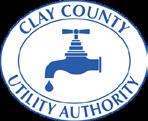
Senior Design Engineer /project manager, GIS & Asset System manager, Water treatment plant operator trainee, Wastewater Mechanic, and electrician. Apply at WWW.CLayutility.org
Water Plant Operator
Technical work in the operation of a water treatment plant and auxiliary facilities on an assigned shift. Performs quality control lab tests and other analyses, monthly regulatory reports, and minor adjustments and repairs to plant equipment. Applicant must have State of Florida D.E.P. Class “A”, “B”, or “C ” Drinking Water License at time of application. Excellent benefits package. To apply and/or obtain more details contact City of Temple Terrace, Chief Plant Operator at (813) 506-6593 or Human Resources at (813) 5066430 or visit www.templeterrace.com. EOE/DFWP.
SALARY RANGES:
$22.13 - $35.42 per hour • w/”C” Certificate
$24.34 - $38.96 per hour • w/”B” Certificate (+10% above “C”)
$26.77 - $42.86 per hour • w/”A” Certificate (+10% above “B”)
$1,000 Hiring Bonus!
Water Reclamation Facility Operator III
(IRC58876) This is skilled technical work, with supervisory responsibilities, in the inspection and operation of a water reclamation plant. The person in this position fills the role as the shift leader. Work involves responsibility for the safe and efficient operation of a water reclamation facility, routine adjustments to equipment and machinery operating controls, inspection of equipment inside and outside the plant site. An employee in this class exercises considerable independent judgment in adjusting machinery, equipment, and related control apparatus in accordance with established procedures and standards to produce a high-quality reclaimed water product. An employee in this class must be able to report to work outside of normally scheduled work hours at the discretion of management.
Required Qualifications:
• Possess a valid high school diploma or GED equivalency.
• Possess and maintain a valid Driver License.
• Possess and maintain a State of Florida Wastewater Operator “B” License.
• Must be able to perform shift work.
• Acknowledge this position is designated as Emergency Critical (EC) and if hired into the position, you must be immediately available to the department before, during, and after a declared emergency and/or disaster.
Salary: $29.97 - $39.90 hourly
http://www.stpete.org/jobs
Water Plant Operator or Operator Trainee
The City of Flagler Beach has positions available at our Water Department. Positions available include:
Water Plant Operator Trainee
Water Plant Operator C or B
Compensation will be based upon level of experience and license level.
Starting salary $16.80-$25.00 per hour DOQ. To view the complete job posting and to apply please visit www.cityofflaglerbeach.com EOE, DFWP Position open until filled.
The City of Marco Island seeks a Project Manager in the Water & Sewer Department

Performs senior-level and experienced professional work in the planning, designing, managing, organizing, and coordinating the City’s Capital Improvement Program. Work is performed under general direction with latitude for the use of initiative and independent judgement based on professional education and previous experience. Position relies on advanced level experience and exercises independent judgement to determine the best approach by using and interpreting policies and procedures. Position seeks technical guidance only on unusual or complex problems or issues.
High school diploma or GED; bachelor’s degree in engineering, business, construction management, public administration, or related field; supplemented by five (5) or more years’ of progressively responsible experience in construction management; or an equivalent combination of education, certification, training, and/or experience. Must have a valid Florida driver’s license. Certification in Project Management (CPM) and/or Professional Engineer license is preferred.
Candidate is subject to interview(s), medical testing (including drug screening), and a comprehensive background investigation.
Salary: $76,285 to $97,263 annually, Compensation will be based upon the level of experience.
To view the complete job posting and instructions for applying for this position, please visit our website, https://www.governmentjobs.com/careers/marcoisland/ jobs/3998519/project-manager?page=2&pagetype=job OpportunitiesJobs
EOE/AA/ADA/VET Employer
Florida Water Resources Journal • May 2023 55
Supervisor of Residential Commercial Utility Billing
City of Tampa Water Department
Salary Range: $75,566 - $113,318
The City of Tampa Water Department is seeking an experienced Utility Billing Supervisor to oversee the monthly billing of over 160,000 residential, commercial, and industrial customers. This fast-paced, customer-facing role requires considerable tact, diplomacy and sound judgment. To learn more about this exciting opportunity, please visit www.tampa.gov/careers
City of Tamarac - SCADA Operations Analyst
The City of Tamarac is seeking a qualified candidate to fill the SCADA Operations Analyst position.
Salary $83,260.00 - $104,127.00 Annually
Apply online at www.tamarac.org
https://www.governmentjobs.com/careers/tamaracfl/jobs/3985396/ scada-operations-analyst?page=2&pagetype=jobOpportunitiesJobs
The selected candidate performs responsible electronic and related technical and computer work in maintaining the Supervisory Control and Data Acquisition (SCADA) system located at the Water Treatment Facility, as well as remote stations located throughout the water, wastewater and stormwater systems. Provides systems management, maintenance, security and operational control over all related instrumentation infrastructure, computer equipment, communications, software and networks. Repairs, calibrates and maintains a variety of electrical and electronic monitoring and automated process control equipment at the City’s Water Treatment Facility and the water and wastewater systems. Troubleshoots, programs and makes repairs and adjustments to the SCADA system. Reports to the Assistant Director of Public Services/Utilities or designee.
Supervisor of Call Center Operations
City of Tampa Water Department
Salary Range: $75,566 - $113,318
The City of Tampa Water Department is seeking an experienced Call Center Operations Supervisor to oversee a busy utility call center team that averages 170,000 calls per year with approximately 28 FTEs. Customers include over 160,000 residential, commercial, and industrial customers.



This fast-paced, customer-facing role requires consideable tact, diplomacy and sound judgment and a commitment to continuous improvement in achieving desired metrics. To learn more about this exciting opportunity, please visit www.tampa.gov/careers
This is an excellent opportunity to make a difference and enjoy the many benefits the City has to offer. From our supportive workforce, growing community and comprehensive benefits package. Tamarac is the City For Your Life! Apply today!

Business Operations Analyst
City of Tampa Water Department
Salary Range: $60,403 - $90,417
The City of Tampa Water Department is seeking an experienced Business Operations Analyst to maximize the productivity and efficiency of the department’s operations. This highly responsible, collaborative role will provide workforce management scheduling and reporting, fiscal reporting, and KPI reporting to support the Department’s strategic goals.
This role assists in employee training and workforce development as well as interacting with high profile customer inquiries. To view position details and apply, visit www.tampa.gov/careers
Water Treatment Plant Operator
The Water Treatment Plant at Village of Wellington is currently accepting applications for a full-time Water Operator. Apply online. Job postings and application are available on our website: https://wellingtonfl.munisselfservice.com/ employees/EmploymentOpportunities/JobDetail. aspx?req=34&sreq=6&form=WTO3&desc=OPERATOR%20 III,%20WATER%20TREATMENT%20PLANT

We are located in Palm Beach County, Florida. The Village of Wellington offers great benefits. For further information, call Human Resources at (561) 753-2585.
The Department of Environmental & Engineering Services (DEES) is currently accepting job applications at: https://www.margatefl.com/207/Job-Opportunities
56 May 2023 • Florida Water Resources Journal
The City of Delray Beach invites you to apply for:
Assistant Water Sewer Network Manager
$62,420.80 - $99,860.80/yr.
Please visit our website: https://www.delraybeachfl.gov/home to learn more about what Delray Beach - “The Village by the Sea” has to offer and submit your on-line application today!
The Coral Springs Improvement District – A GREAT place to further your career and enhance your life!
CSID offers…
Salary levels are at the top of the industry Health Insurance that is unmatched when compared to like sized Districts
Promotions from within for qualified employees
Continuing education courses to develop your skills and further your growth
Retirement plans where an employee can earn 18% of their salary by contributing toward their future
The Coral Springs Improvement District is seeking qualified employees in the following field:
Wastewater Plant Operator:
Applicants must have a valid Class C Wastewater Treatment license or greater.
Operates sewage treatment, sludge processing, and disposal equipment in wastewater (sewage) treatment plant to control flow and processing of sewage. This employee is responsible for keeping within permit discharge limits and routinely monitors the flow of waste water and chemical levels. Employee in this class receives general supervision and reports to the Lead Operator. Salary range: $47,000. - $68,000. Salary to commensurate relative to level of experience in this field.
Benefits:
Excellent benefits which include health, life, disability, dental, vison and a retirement plan which includes a 6% non-contributory defined benefit and matching 457b plan with a 100% match up to 6%. EOE. All positions require a valid Florida Drivers license, high school diploma or GED equivalent, be COVID-19 vaccinated and must pass a pre-employment drug screen test Salaries for the above position based on level of licensing and years of experience.
Submit resume to jzilmer@csidfl.org or fax resume to 954-7536328, attention Jan Zilmer, Director of Human Resources.
Peace River Manasota Regional Water Supply Authority - Multiple Positions
Water Plant Treatment Operator, A, B or C/Operations Supervisor/ Environmental Specialist I. Apply at www.regionalwater.org
WASTEWATER TREATMENT OPERATOR FULL-TIME
The Ocean Reef Community Association (ORCA), located in North Key Largo, FL, has a Full-Time position available for a Wastewater Treatment Operator. The Wastewater Treatment Operator is responsible for recording and interpreting data to generate reports of the plant.
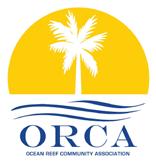
Selected candidate assist with the operation of a secondary level 350,000 gal/day wastewater treatment plant, wastewater collection system, and a reverse osmosis water treatment plant and ancillary facilities. In addition, selected candidate will collect samples and perform routine laboratory analyses. Selected candidate must respond to emergency call outs during weekends, holidays, and non-business hours to ensure continued operation of public facilities. High School Diploma or equivalent is required. Community College and/or Correspondence courses in utility infrastructure are desirable. A valid Florida Driver License is required. A Florida Class C Wastewater Treatment Plant Operator License is required. One (1) to three (3) years of experience is preferred.
Please visit orcareef.com to view the full job description/ requirements and apply online.
Human Resources
OCEAN REEF COMMUNITY ASSOCIATION
orcaemployment@orcareef.com
Water and Wastewater Operations (Multiple Positions)
Hernando County Board of County Commissioners HERNANDO COUNTY, FLORIDA BOCC
Hernando County is currently accepting applications for the following positions:
Wastewater Collection System Worker / Technician
Water Distribution System Worker / Operator
Water Plant Operator
Compensation will be based upon the license, certifications, and years of experience.
For more information and to apply, please visit https://www.governmentjobs.com/careers/hernandocofl
Florida Water Resources Journal • May 2023 57
Editorial Calendar
January .......... Wastewater Treatment
February ........ Water Supply; ................. Alternative Sources
March ............. Energy Efficiency; Environmental Stewardship
April ............... Conservation and Reuse
May................. Operations and Utilities Management
June ............... Biosolids Management and Bioenergy Production
July ................ Stormwater Management; Emerging Technologies
August ........... Disinfection; Water Quality
September ..... Emerging Issues; Water Resources Management
October .......... New Facilities, Expansions, and Upgrades
November ...... Water Treatment
December ...... Distribution and Collection
Technical articles are usually scheduled several months in advance and are due 60 days before the issue month (for example, January 1 for the March issue).
The closing date for display ad and directory card reservations, notices, announcements, upcoming events, and everything else including classified ads, is 30 days before the issue month (for example, September 1 for the October issue).
For further information on submittal requirements, guidelines for writers, advertising rates and conditions, and ad dimensions, as well as the most recent notices, announcements, and classified advertisements, go to www.fwrj.com or call 352-241-6006.
Test Yourself Answer Key
Continued from page 22
1. D) the point of entry.
Per the Inorganics Monitoring Rule, in 62-550.513, F.A.C., monitoring for lead is required at the point of entry.
2. C) 0.015 mg/l.
Per 62-550.513, the MCL for lead is 0.015 mg/l.
3. D) first-draw samples.
The LCR, Subpart I, Part 141, Title 40 Code of Federal Regulations (40 CFR, sections 141.80-.91) and section 62-550.800, F.A.C., requires public water systems to collect first-draw samples.
4. D) that may have an elevated risk of lead/contamination. Per the LCR, samples sites may have an elevated risk of lead/contamination.
5. A) 0.015 mg/l and 1.3 mg/l (lead and copper).
The action levels for lead and copper under the LCR determined by the 90th percentile are 0.015 mg/l and 1.3 mg/l (lead and copper).
6. C) 10 days
Per 40 C.F.R. 141.90, all laboratory results of all lead and copper samples must be sent to the department within 10 days following the end of the compliance period.
7. D) owners or occupants of multifamily residents, businesses, or houses.
Per the LCR, occupants of the buildings in question are required to sample for lead and copper.
8. D) 30 days
Per the LCR, public water systems are required to notify all samplers that participated during the compliance period of their individual results within 30 days of receipt of results.
9. D) the size of the population and its required monitoring frequency.
Per the LCR, the population served and required monitoring frequency determines the number of water samples to be collected during the compliance period.
10. B) Damage to brain, red blood cells, and kidneys
Per the LCR, exposure to lead-contaminated drinking water may result in damage to the brain, red blood cells, and kidneys. The risk is higher for young children and pregnant women.
Display Advertiser Index
58 May 2023 • Florida Water Resources Journal Blue Planet Environmental Systems 59 CEU Challenge 27 Data Flow ............................................................................................ 51 Diamond Scientific 54 FJ Nugent 39 Florida Water Resources Conference......................................... 14-19 FSAWWA Roy Likins Scholarship Fund ................................................ 34 FSAWWA Fall Conference 35-37 FSAWWA Asian Pacific American Heritage Month 38 FWPCOA Region IV Short School .................................................... 49 FWPCOA Training Calendar 43 Gerber Pumps 9 Heyward 2 Hudson Pump .................................................................................... 13 Hydro International 5 Lakeside Equipment Corporation 7 Poly Processing ................................................................................. 33 Smith & Loveless ............................................................................... 53 US Submergent 31 Veolia 23 Water Treatment & Controls Technology ........................................ 52 Xylem 60
Januar y 2016 Januar y 2016 SERVING FLORIDA’S WATER AND WASTEWATER INDUSTRY SINCE 1949
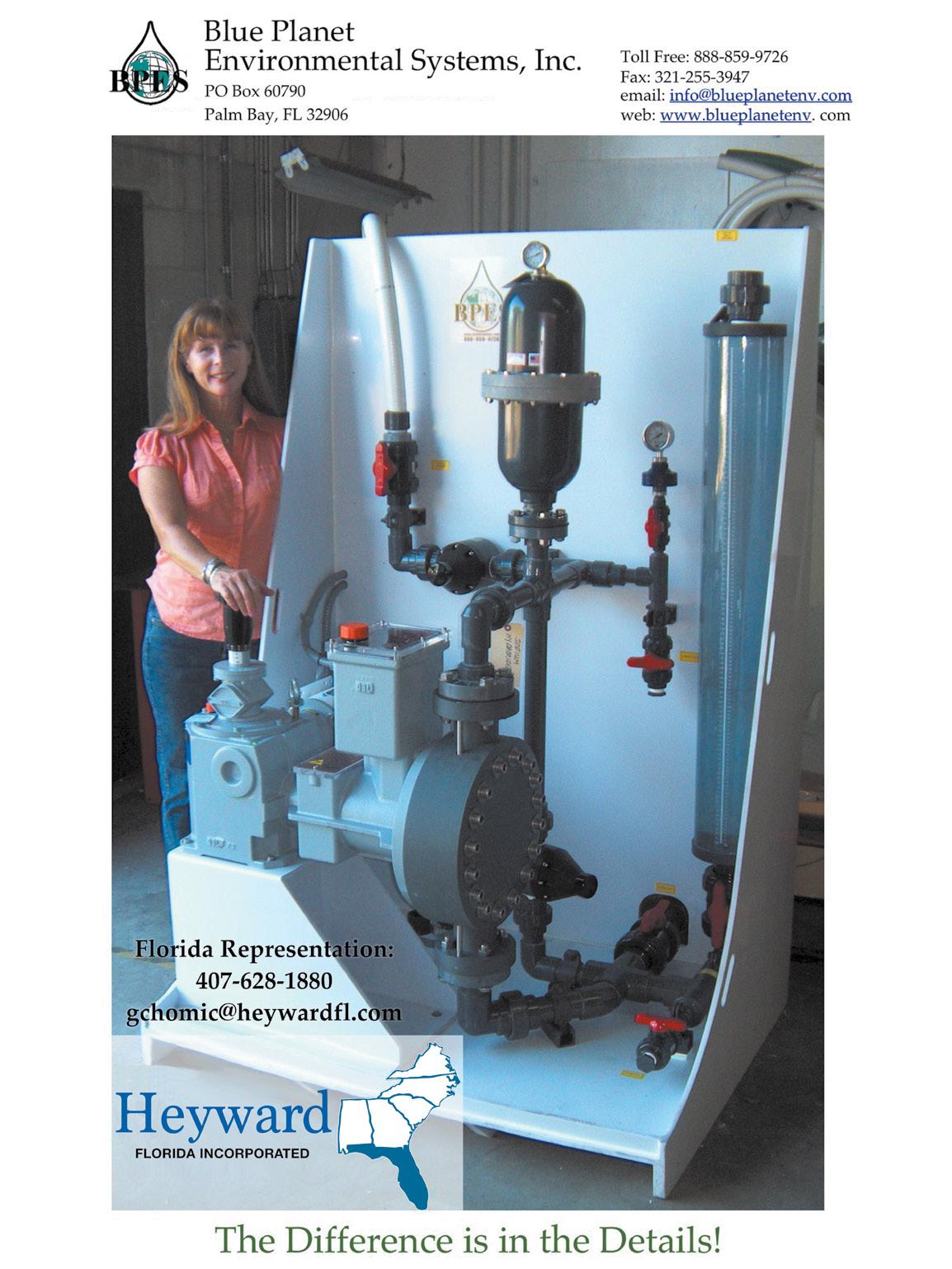
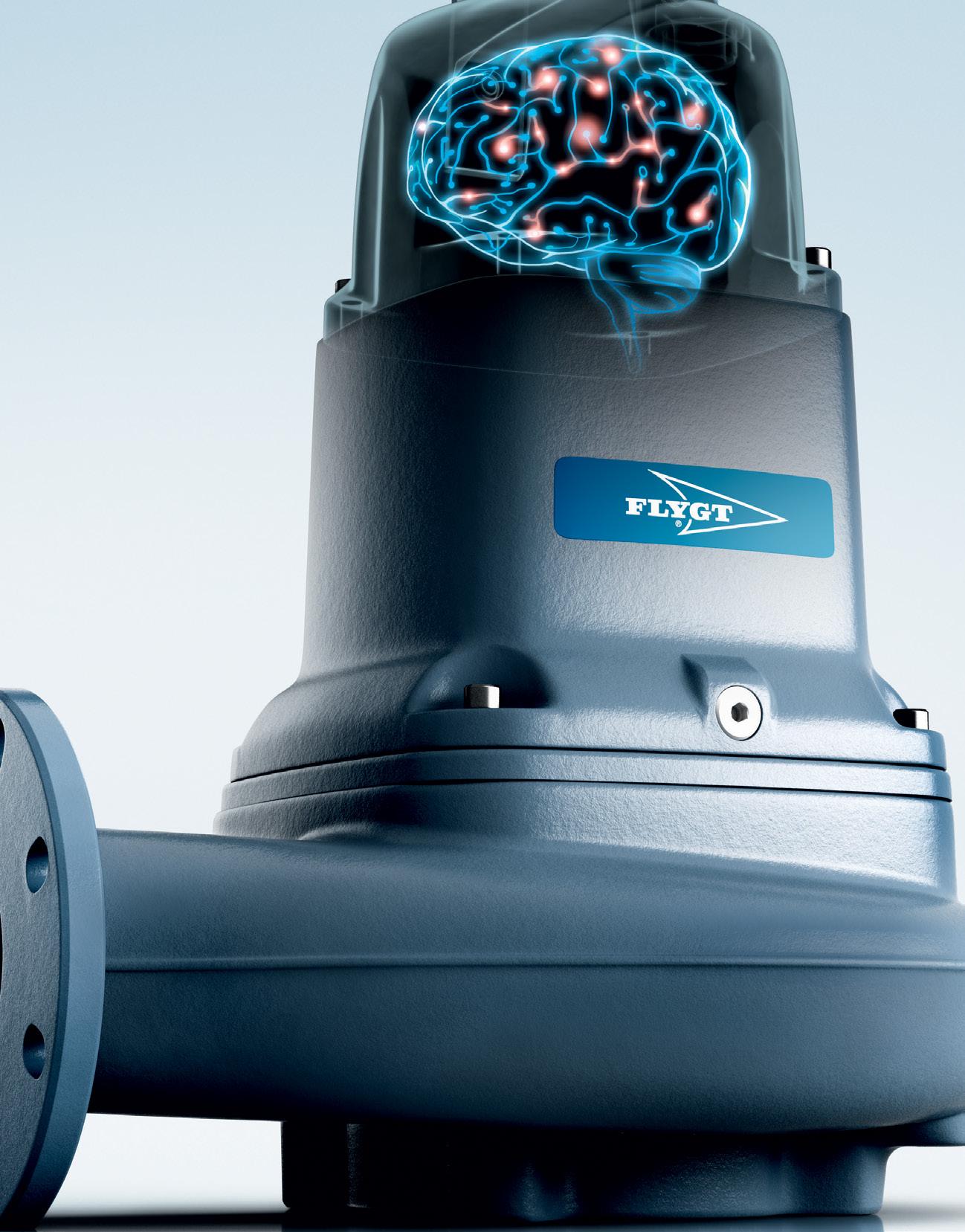
WORLD’S FIRST WASTEWATER PUMPING SYSTEM WITH INTEGRATED INTELLIGENCE This revolutionary system delivers optimal performance while reducing your total cost of ownership. I t also offers unparalleled flexibility and simplicity on a whole new level. You might even say it thinks for itself. We invite you to enter a new era in wastewater pumping with Flygt Concertor. One powerful solution. Unlimited possibilities. For more information contact your local Xylem product sales professional. Xylem Products 455 Harvest Time Dr. Sanford, FL 32771 407-880-2900 www.flygt.com INTEGRATED INTELLIGENCE CONCERTOR™ NEW PUMPING SYSTEM WITH

























































































































































 Cody Diehl
Cody Diehl

















 Greg D. Taylor, P.E.
Greg D. Taylor, P.E.



 Lawrence Slavin
Lawrence Slavin





























